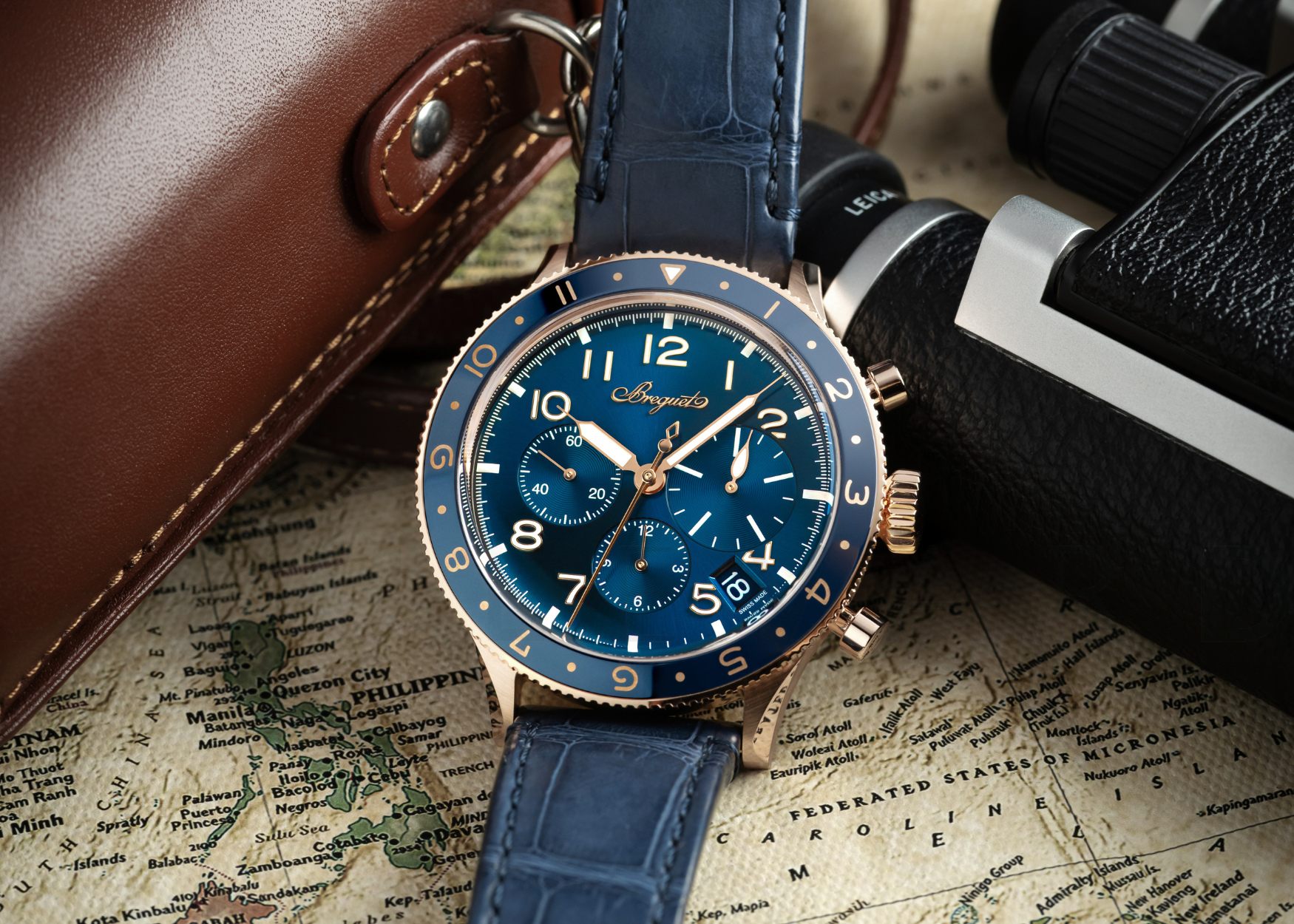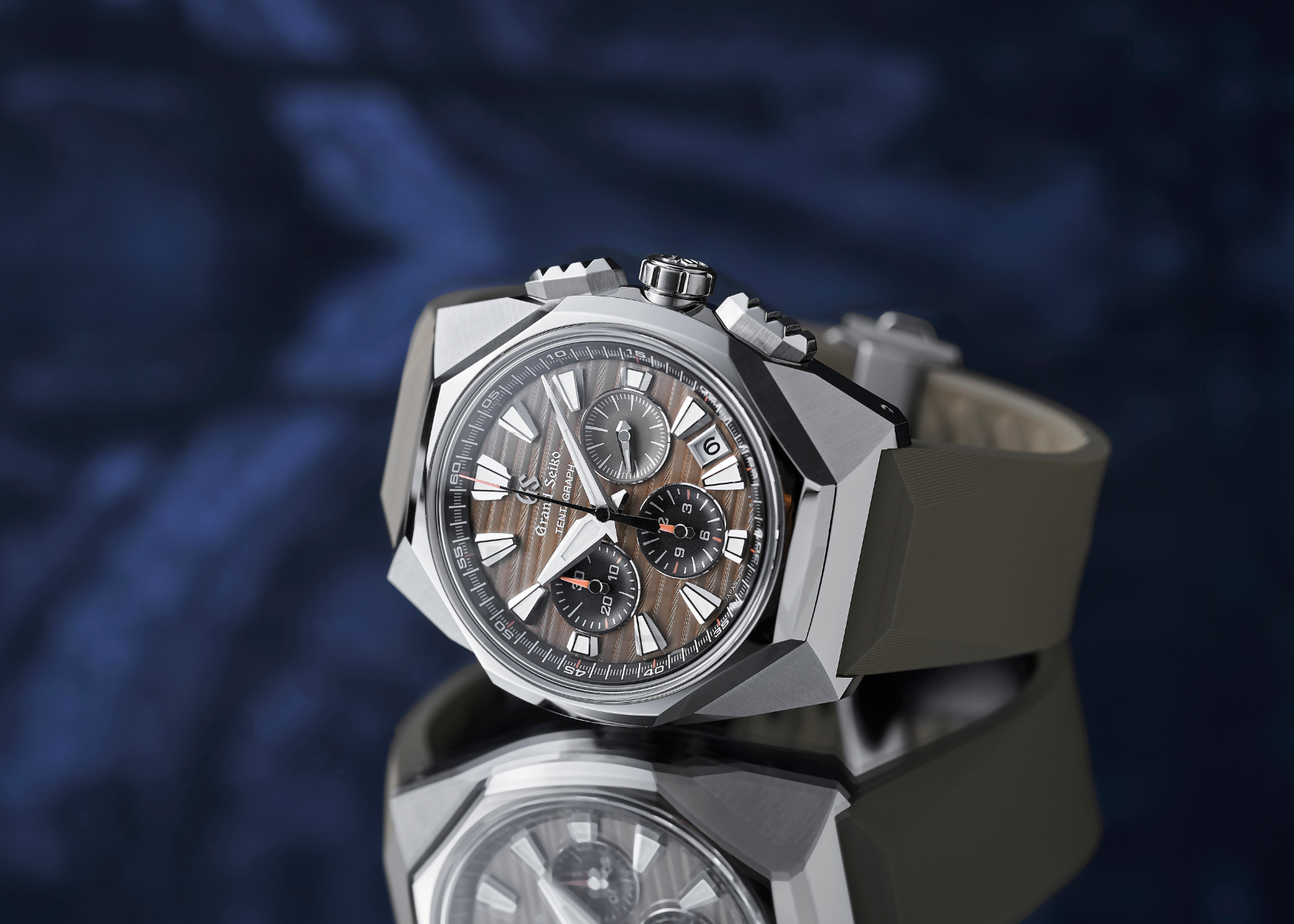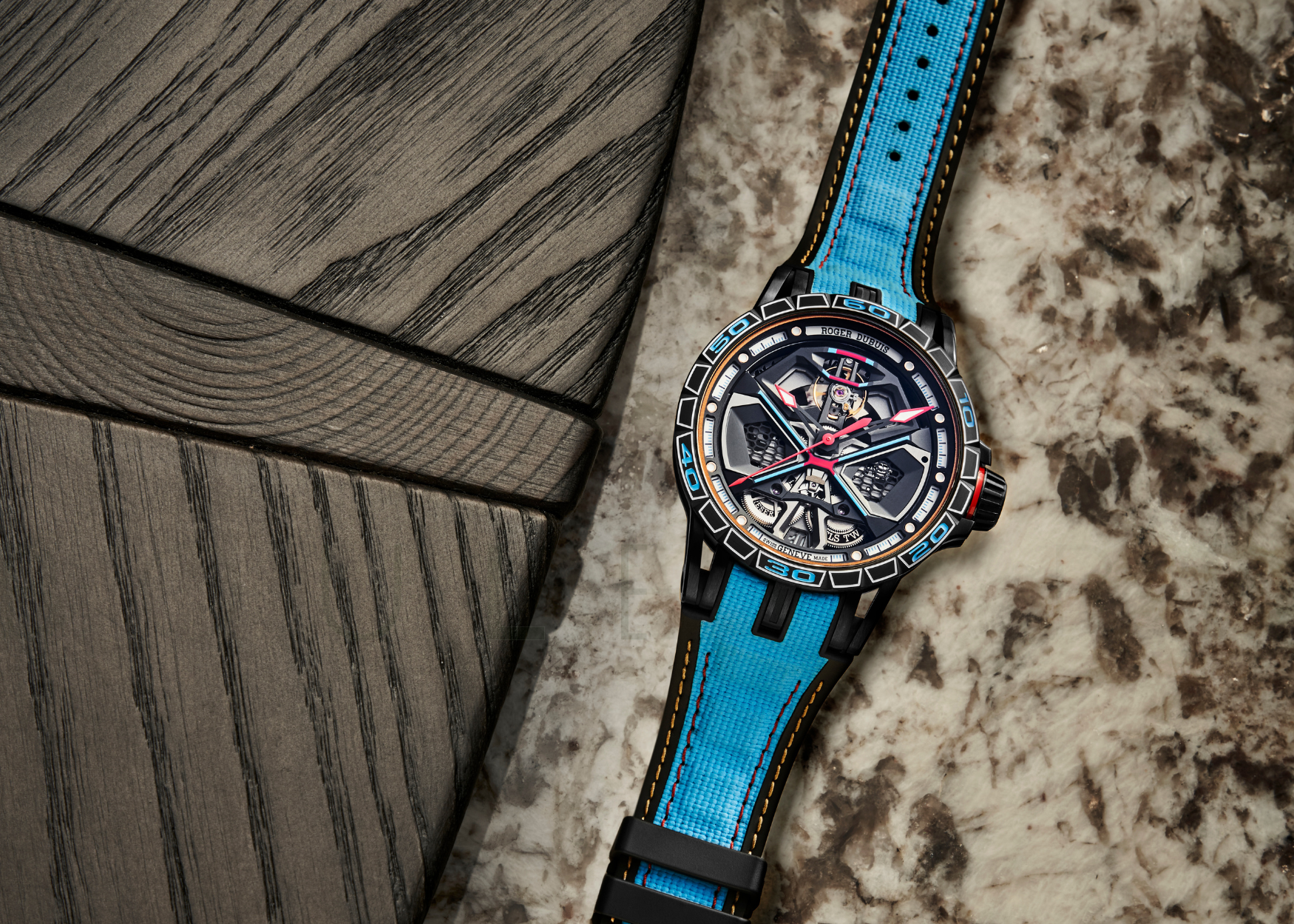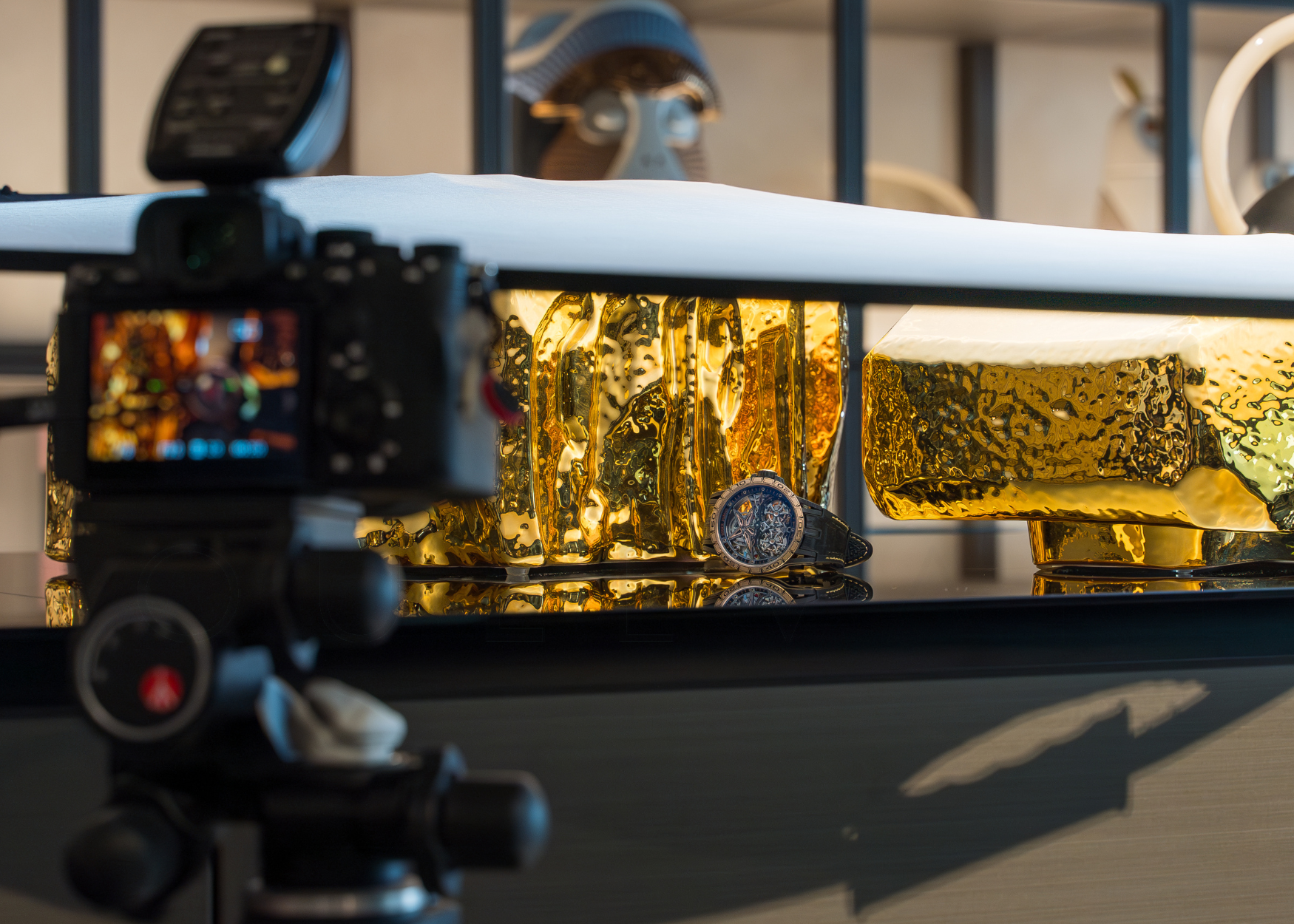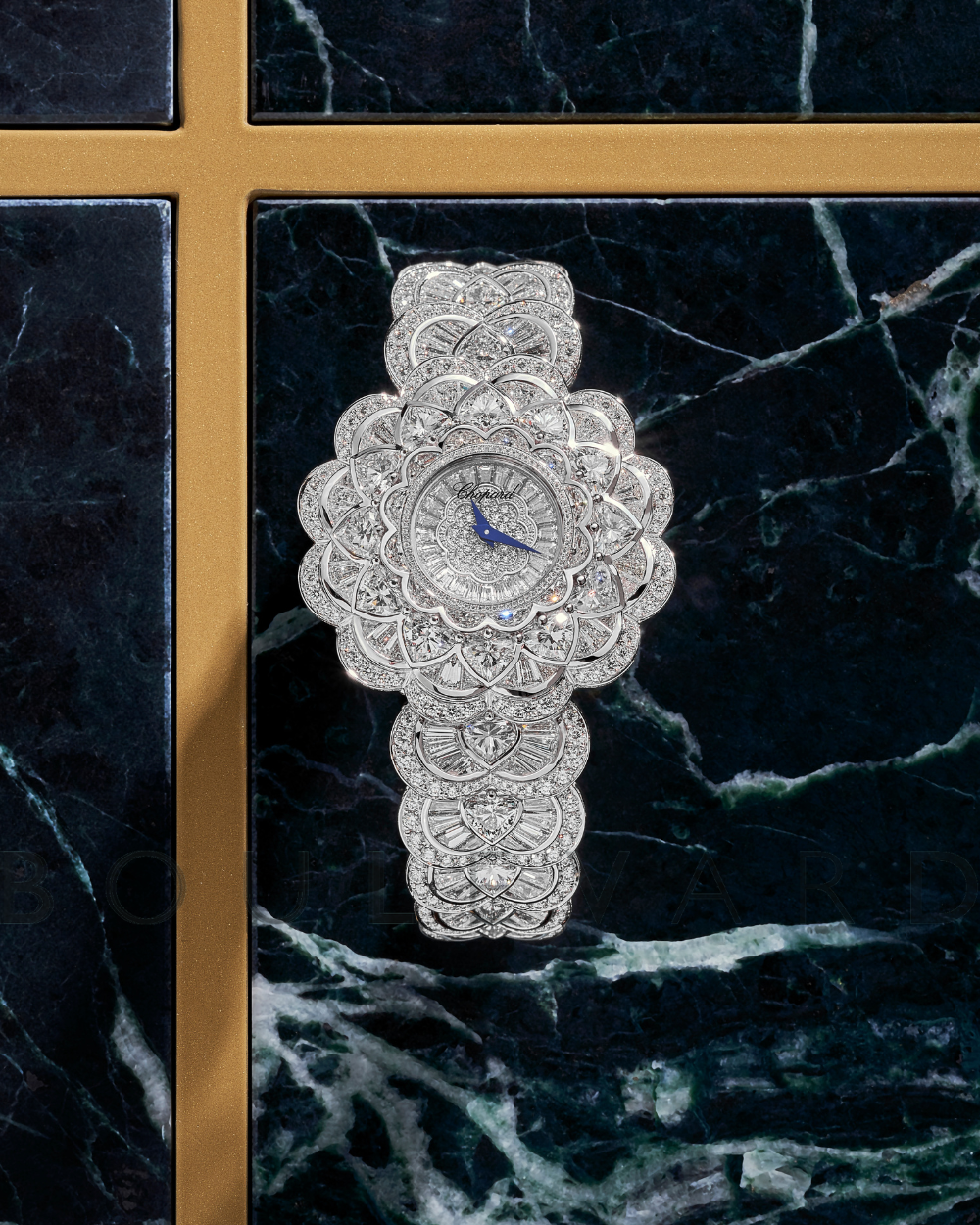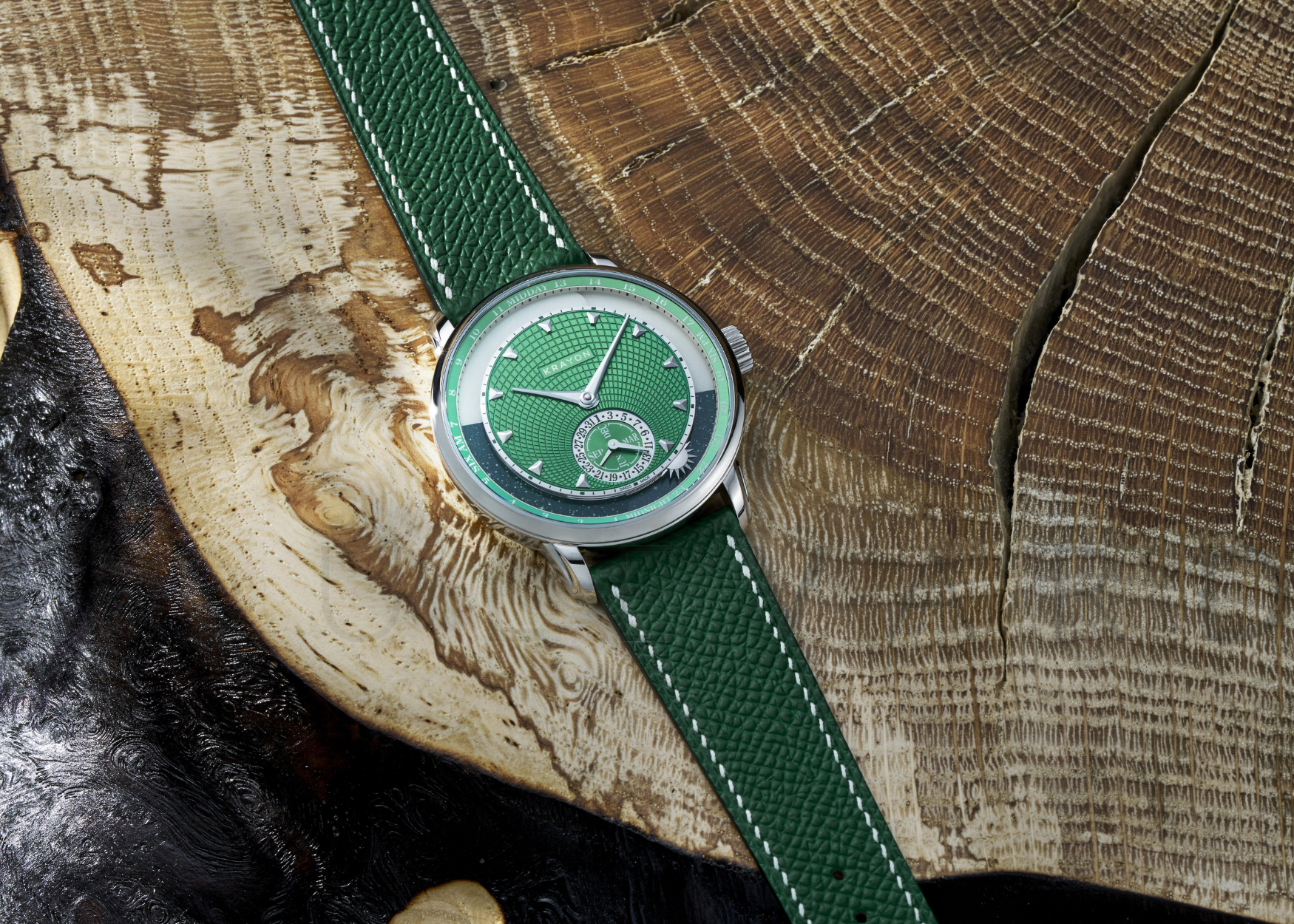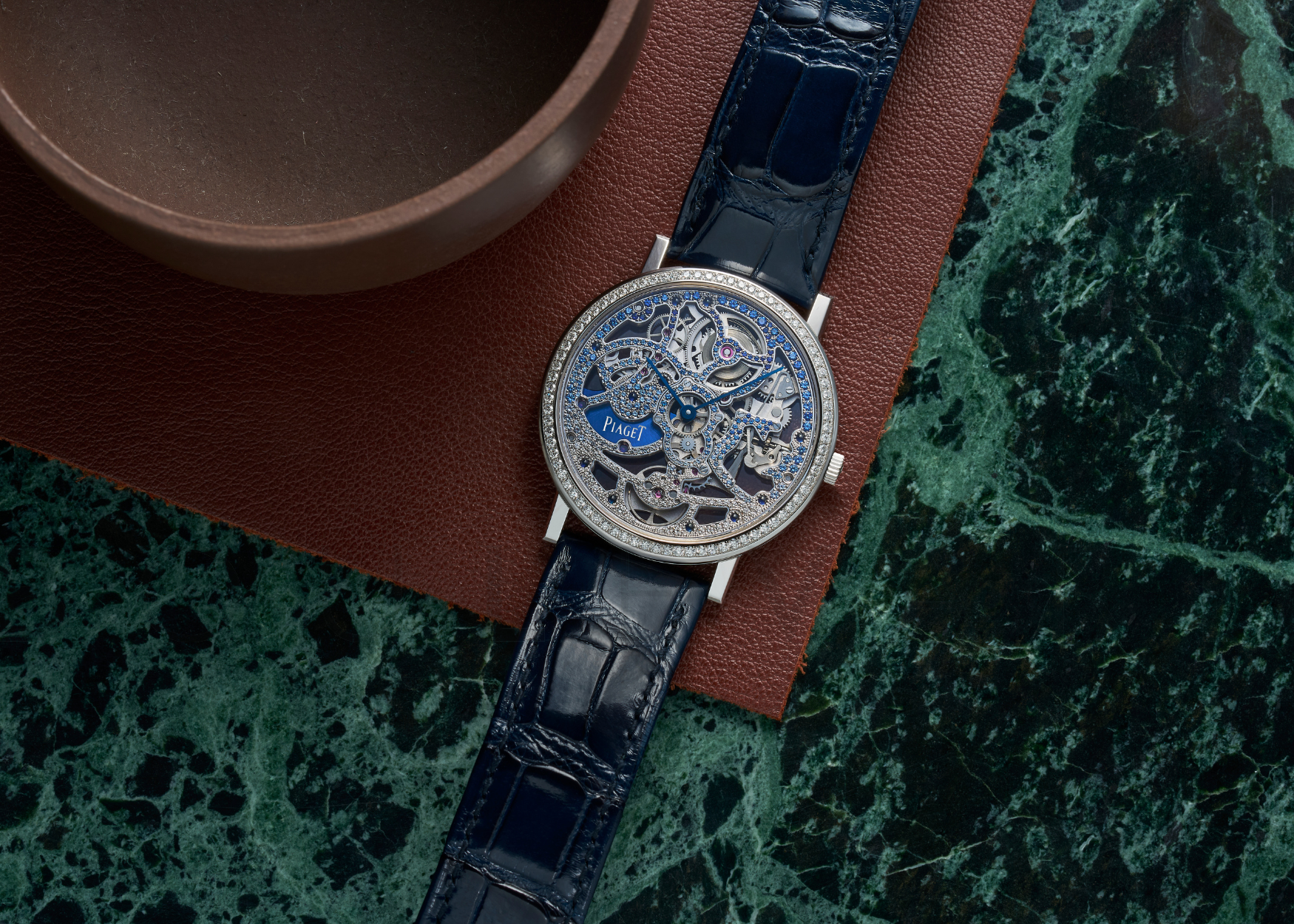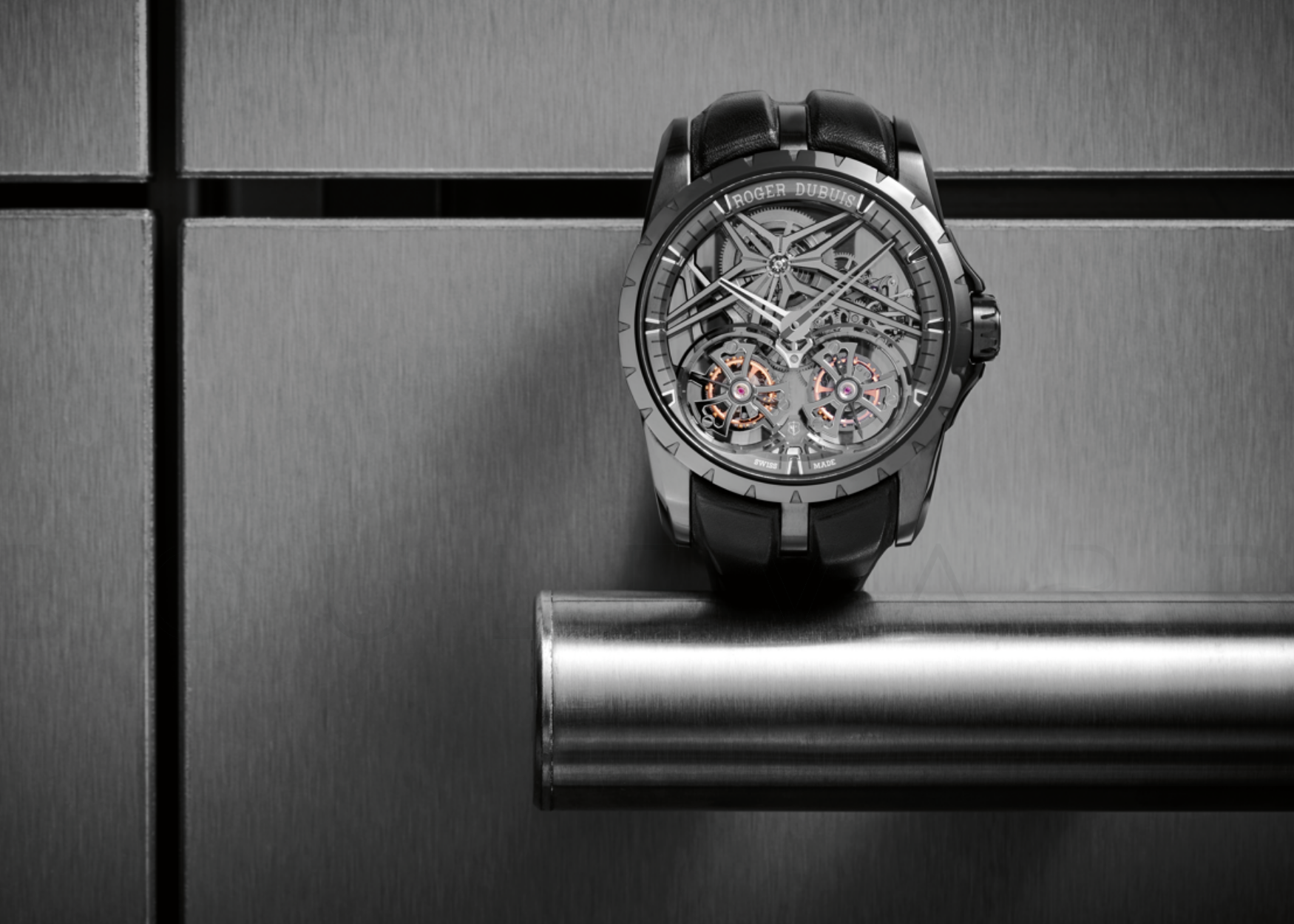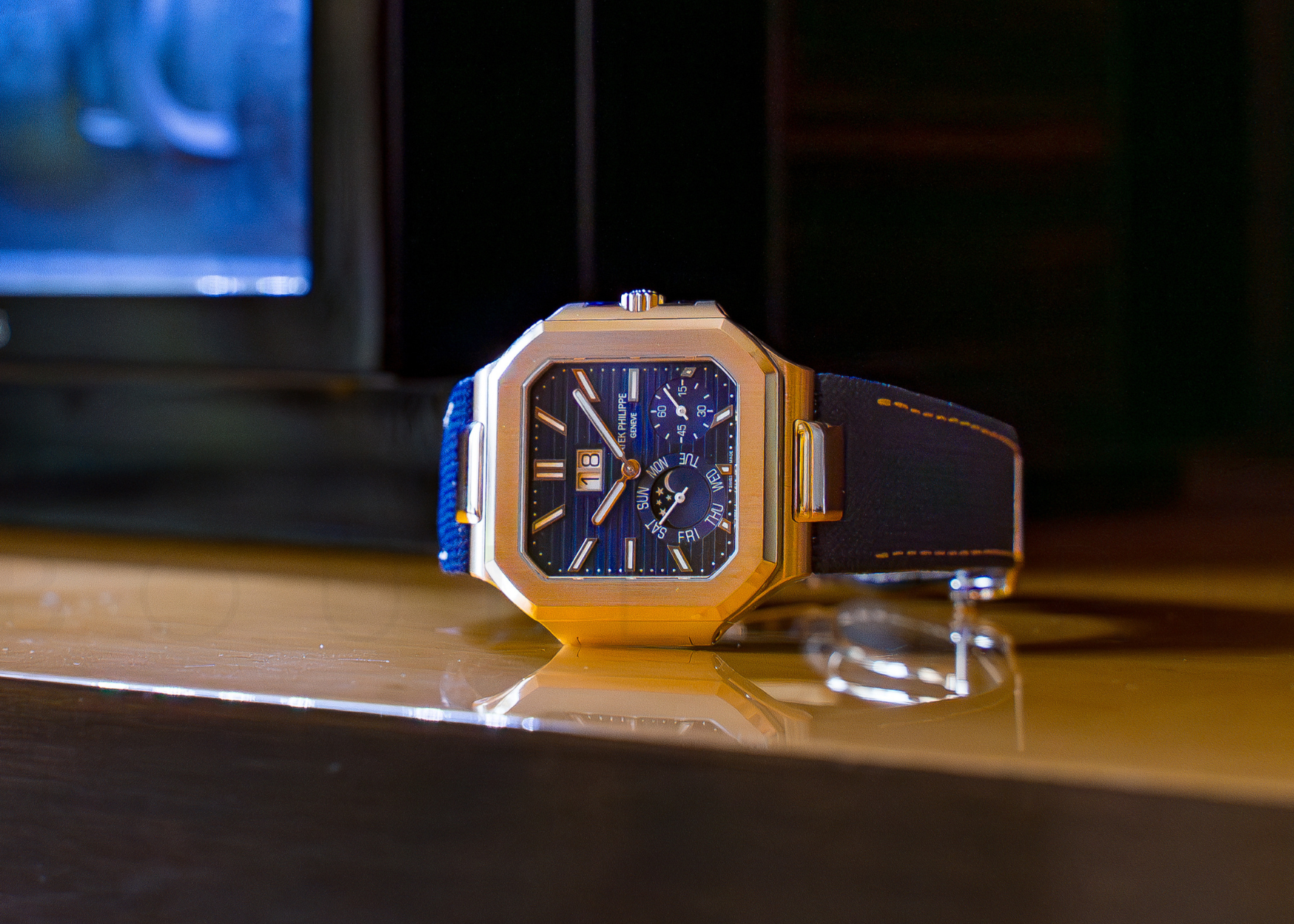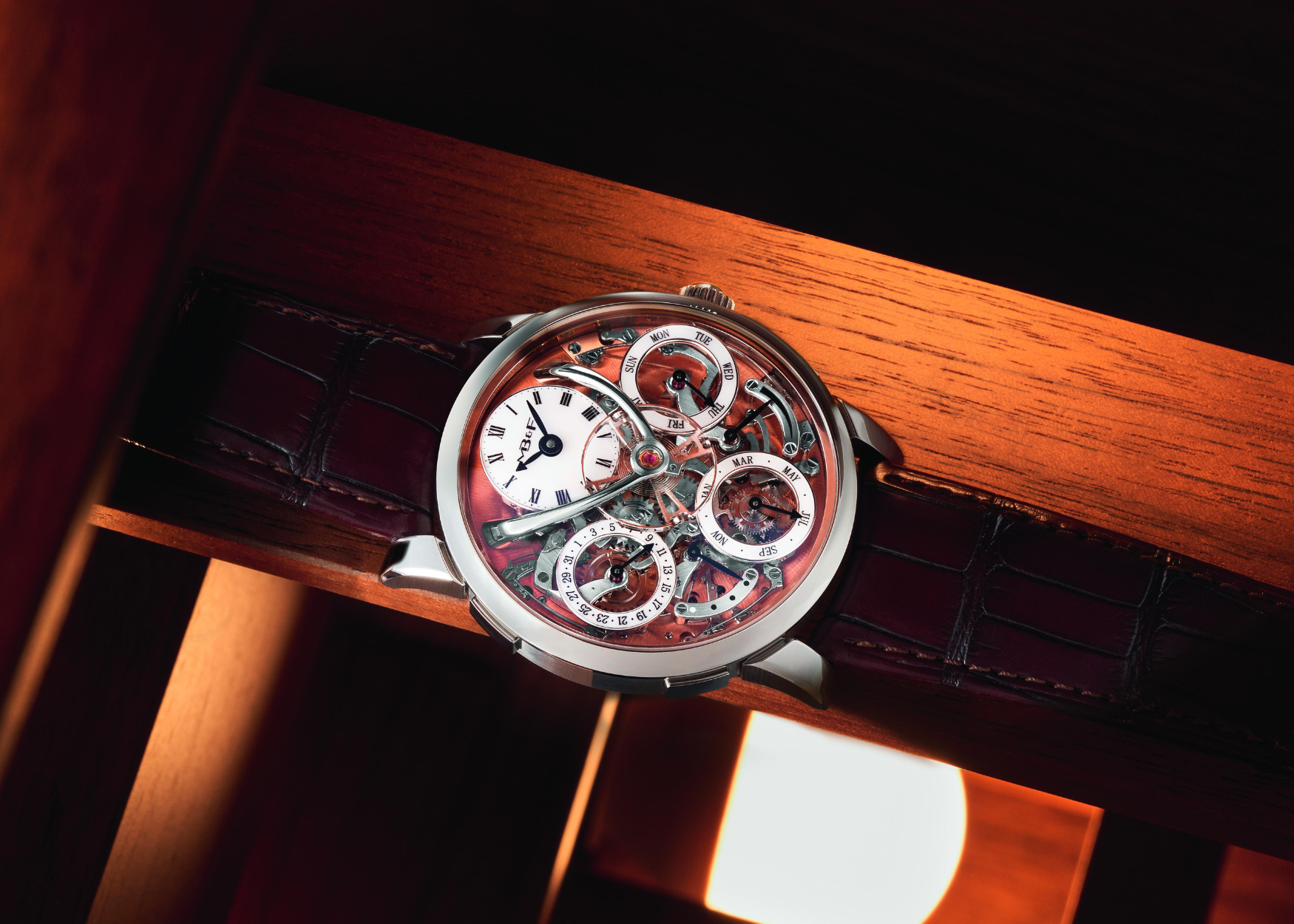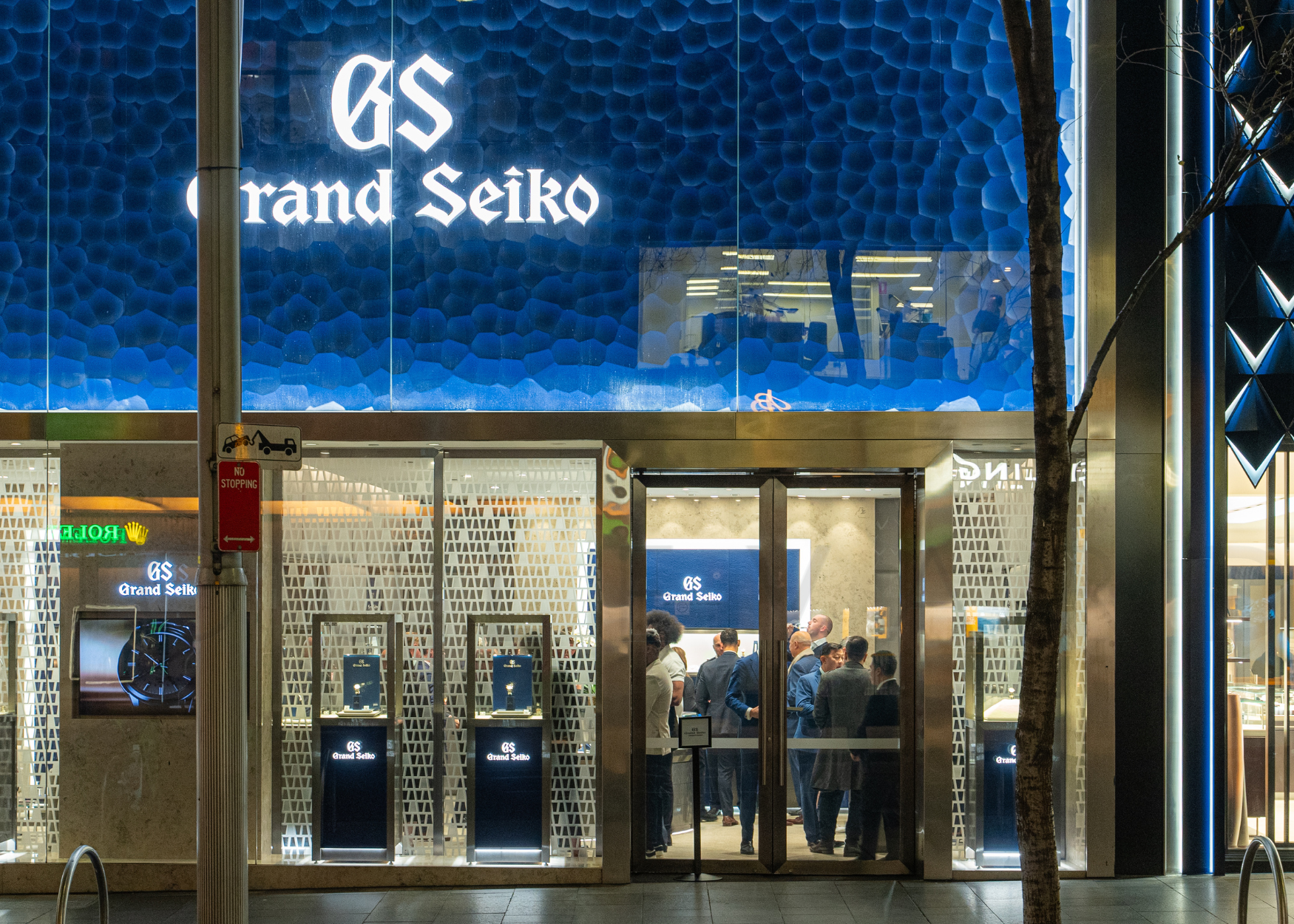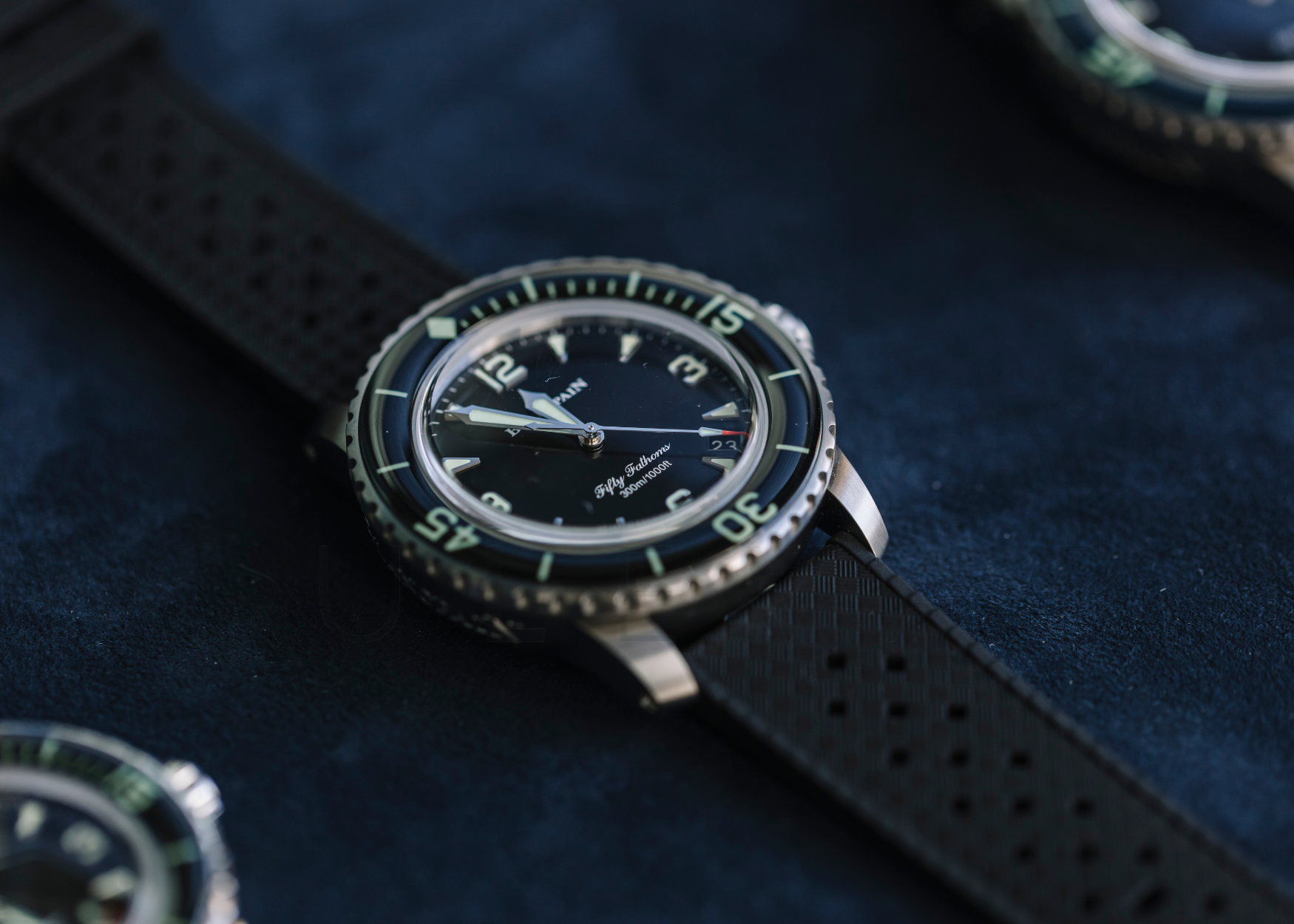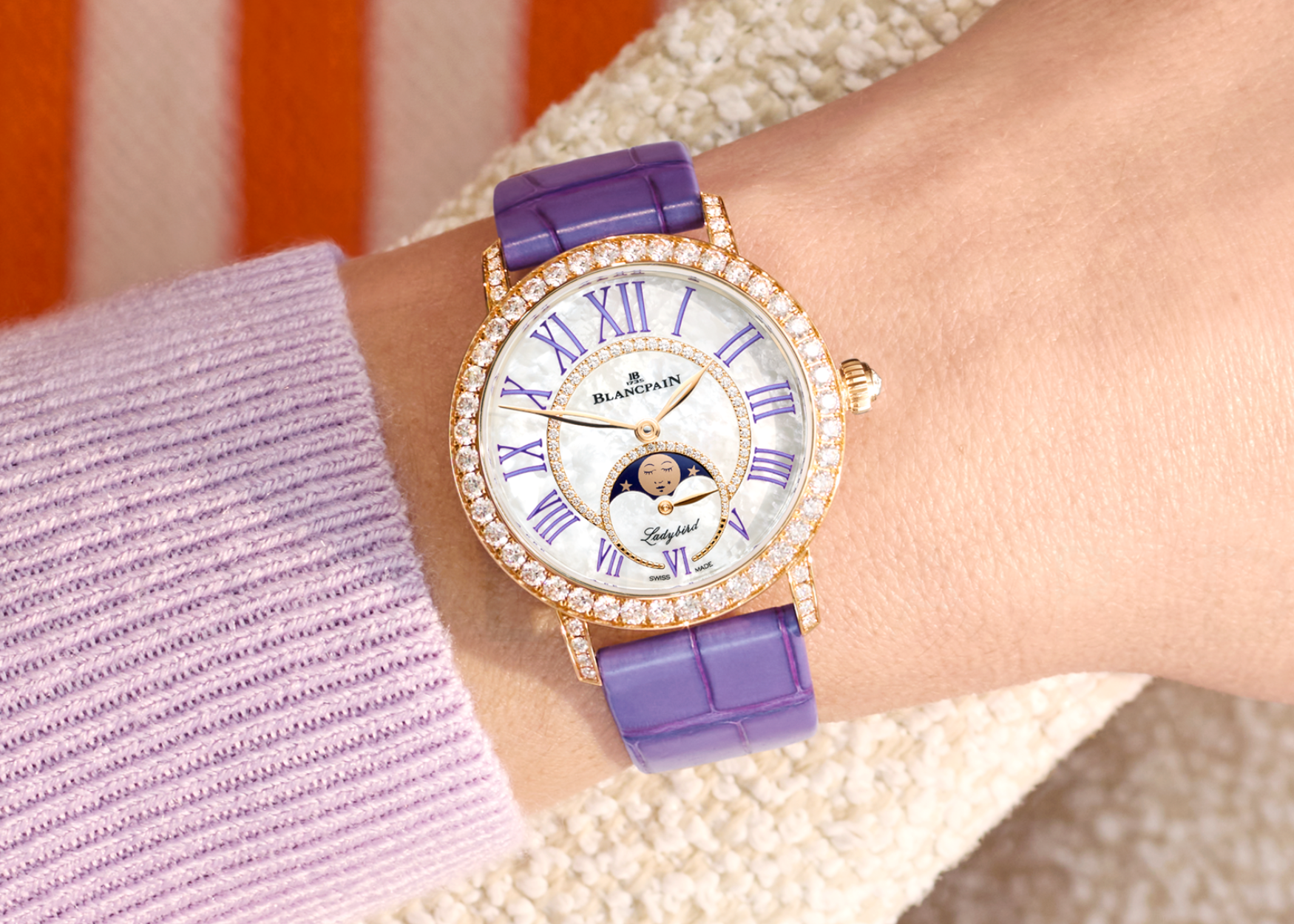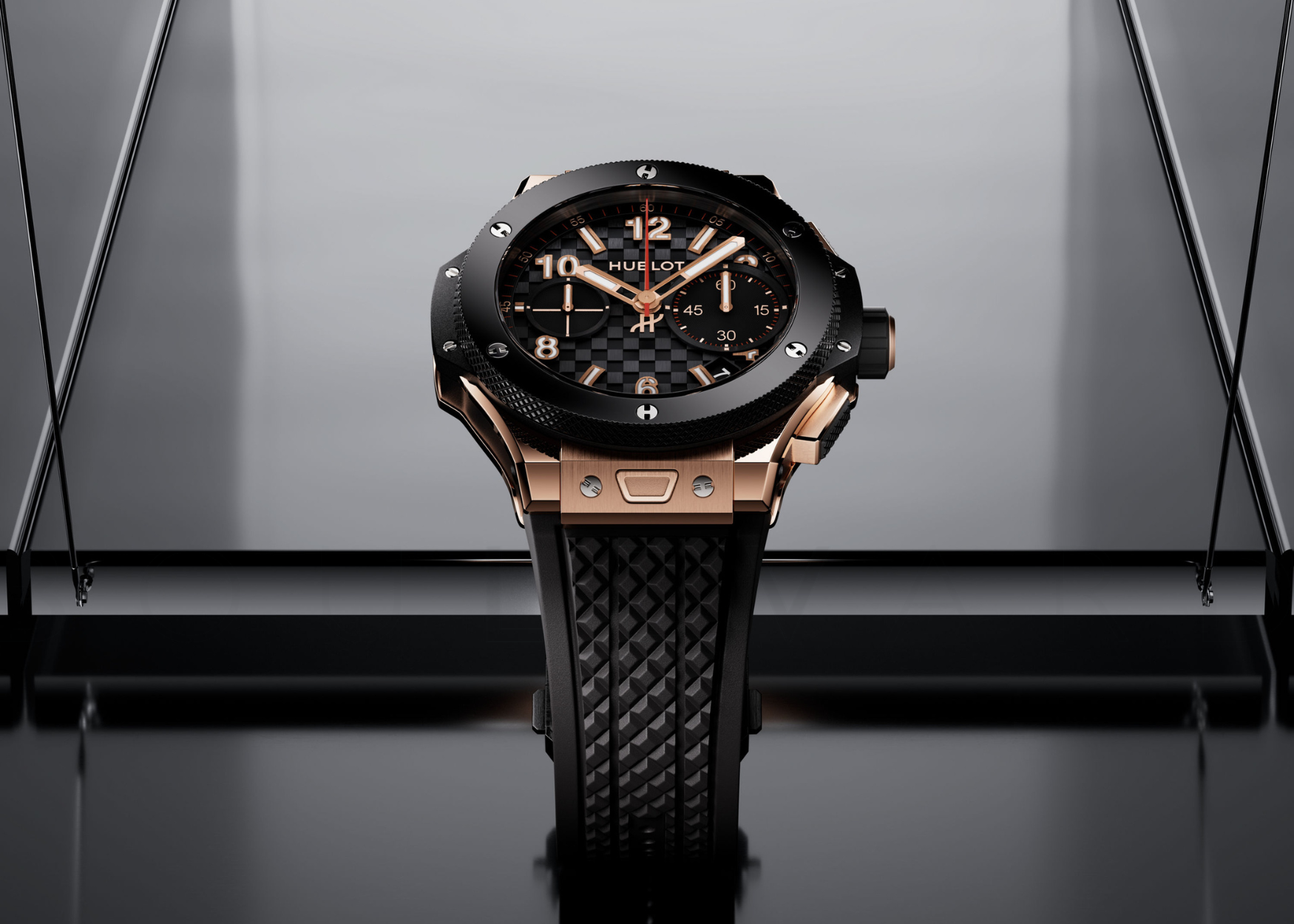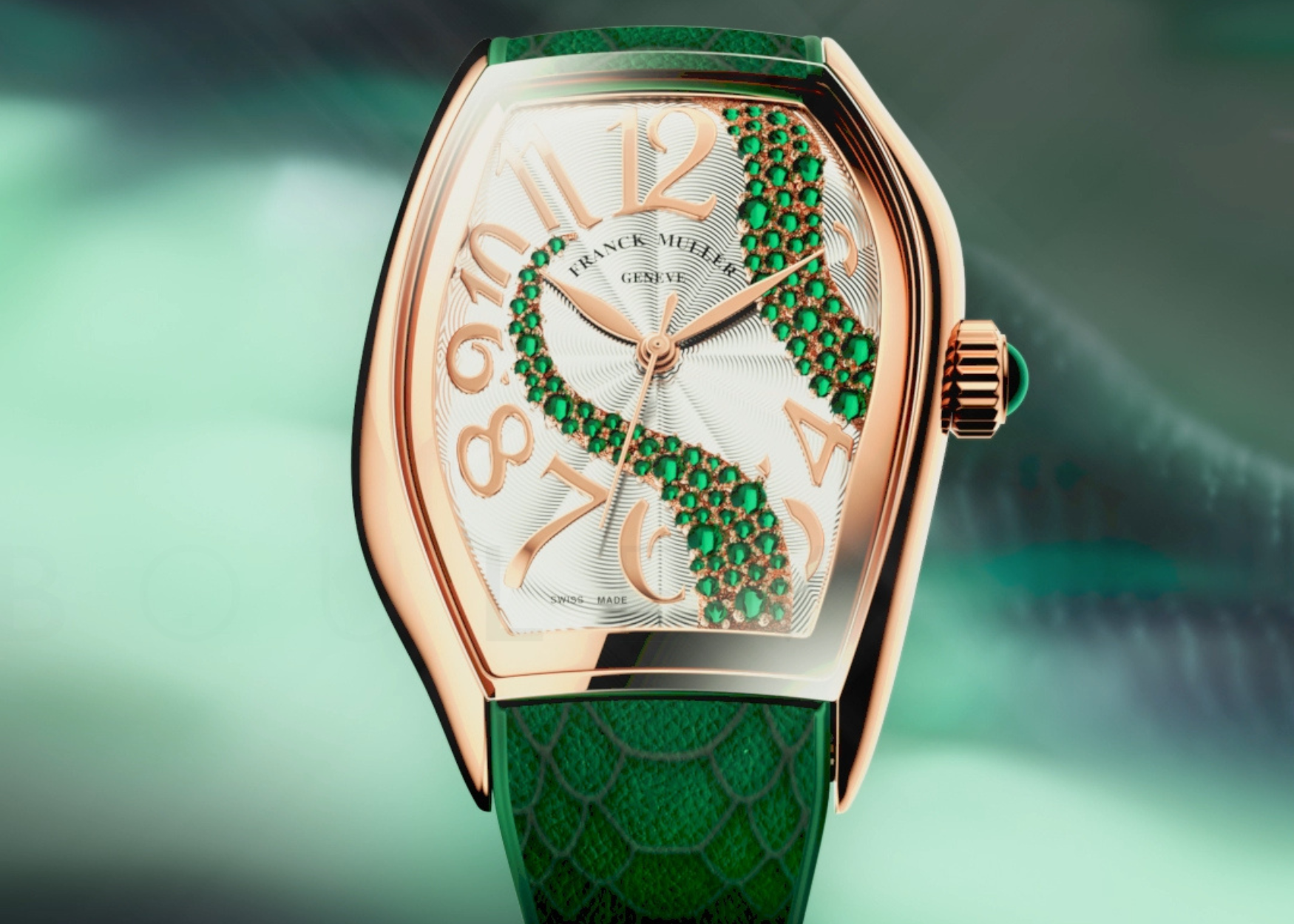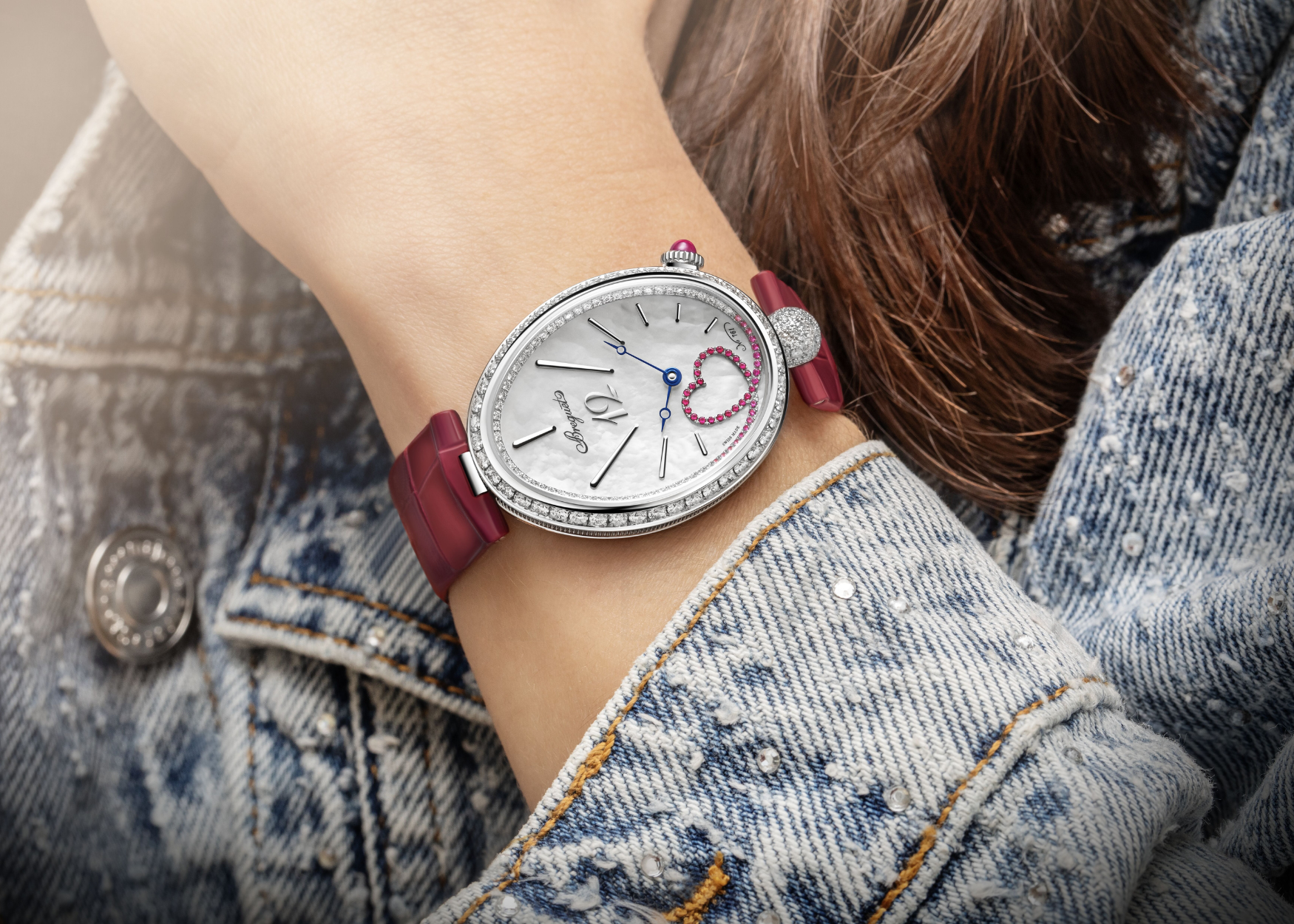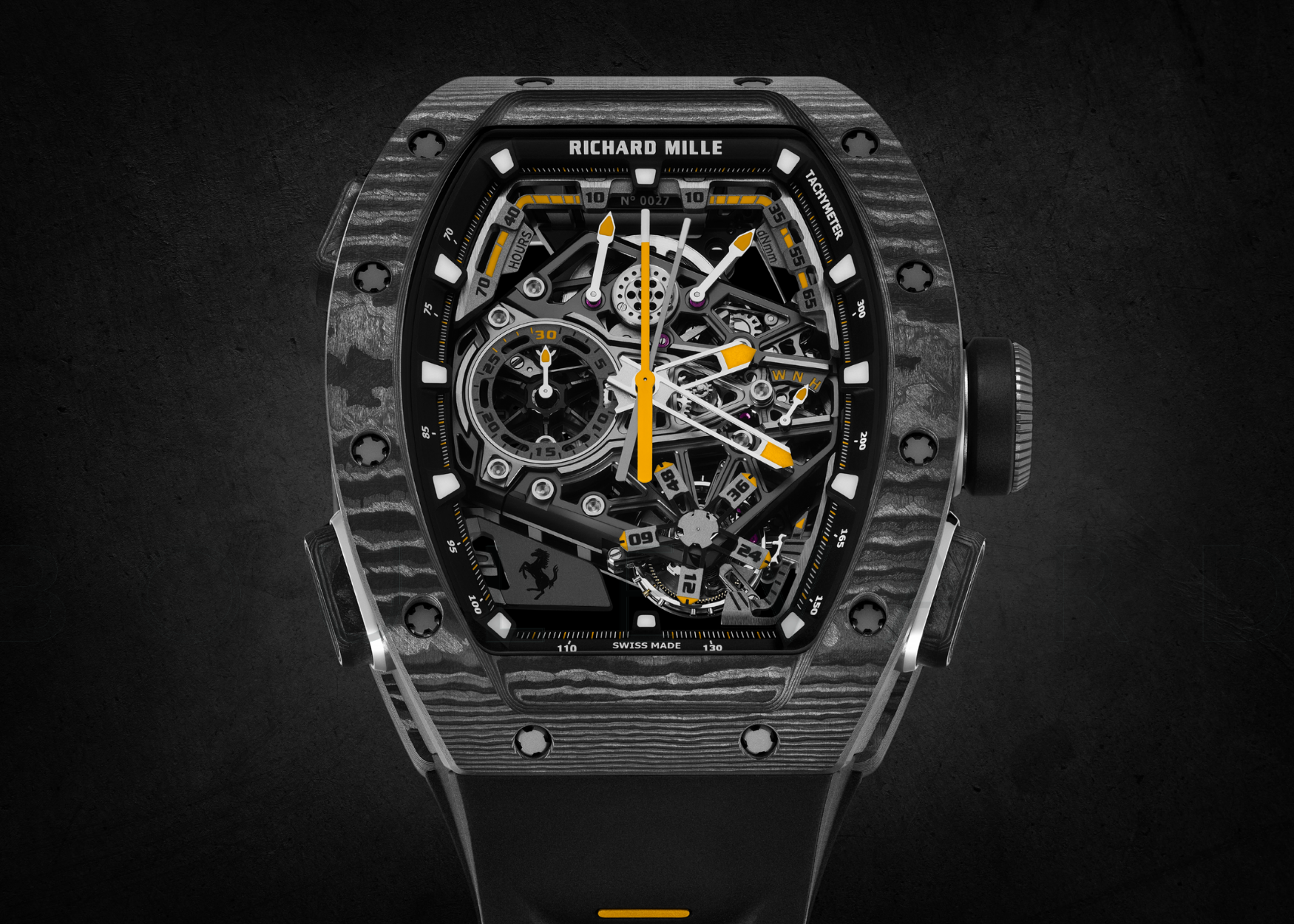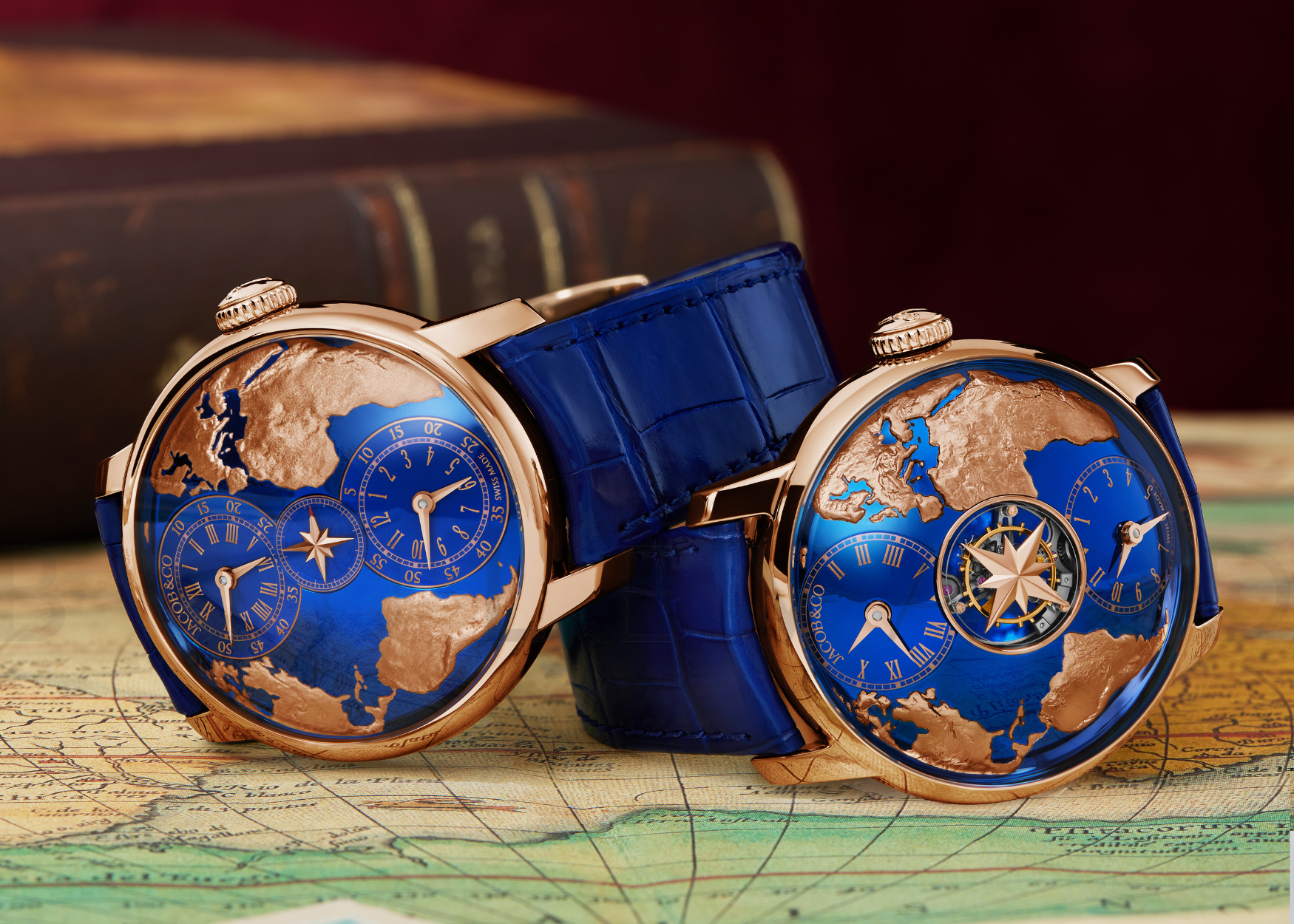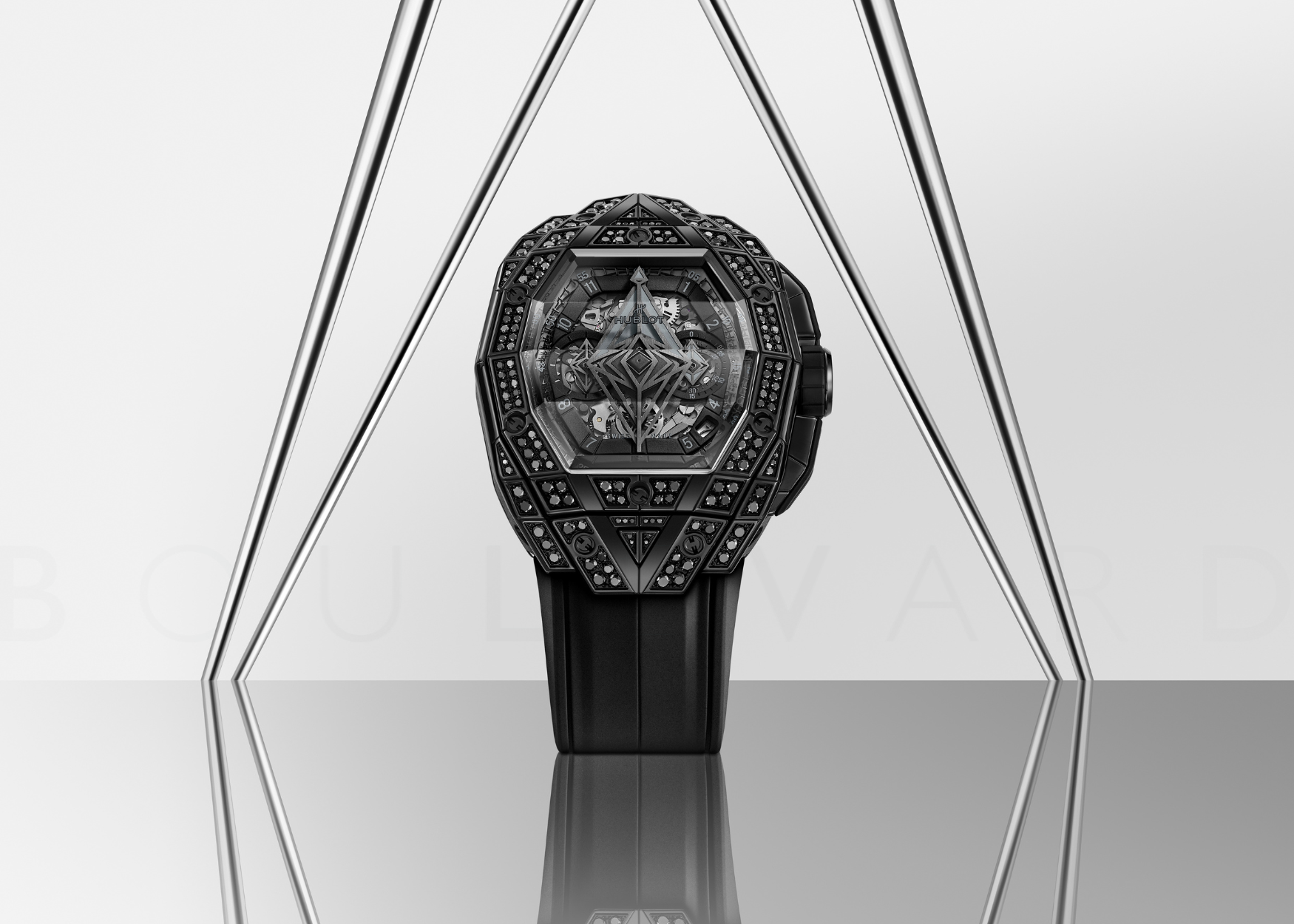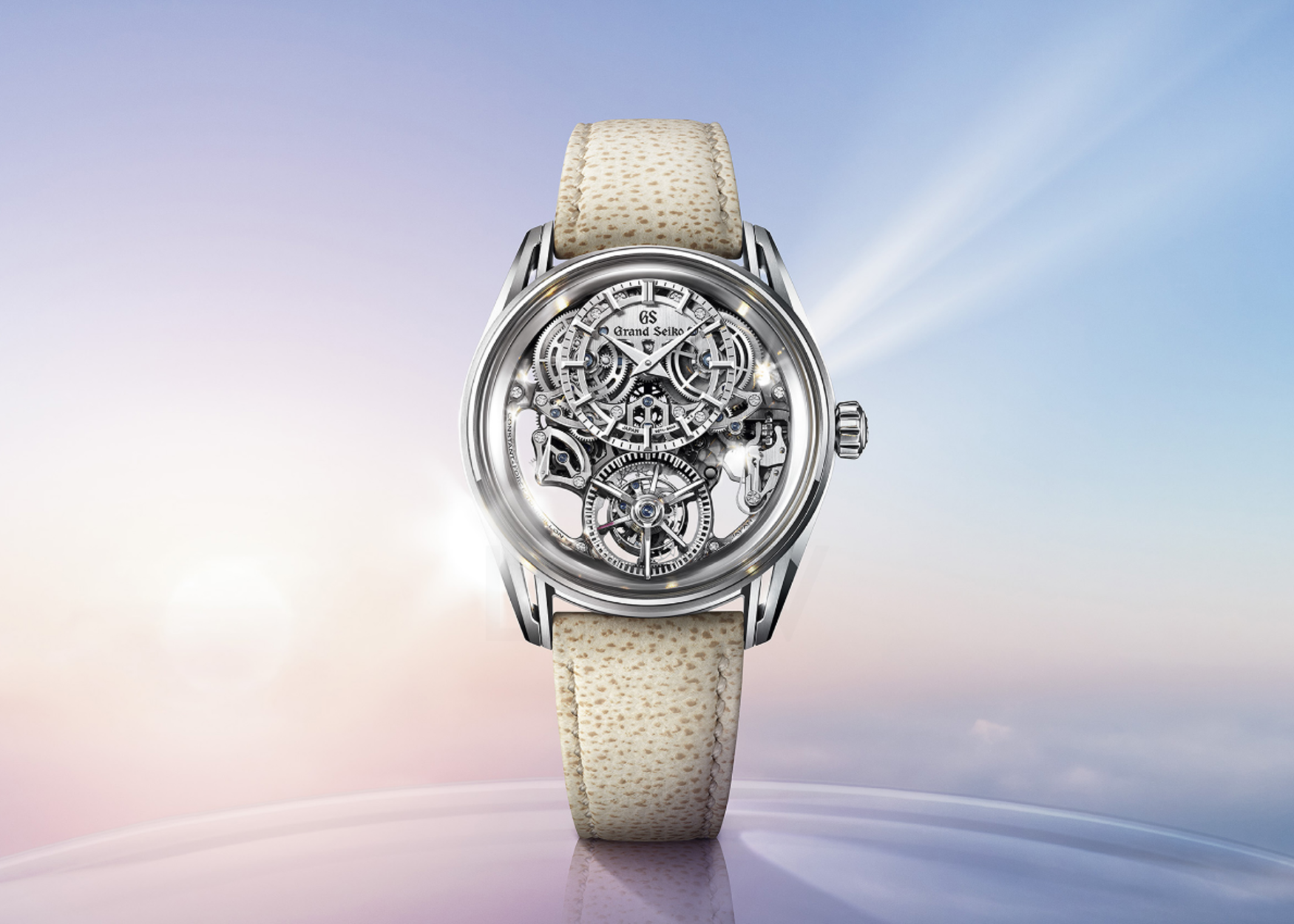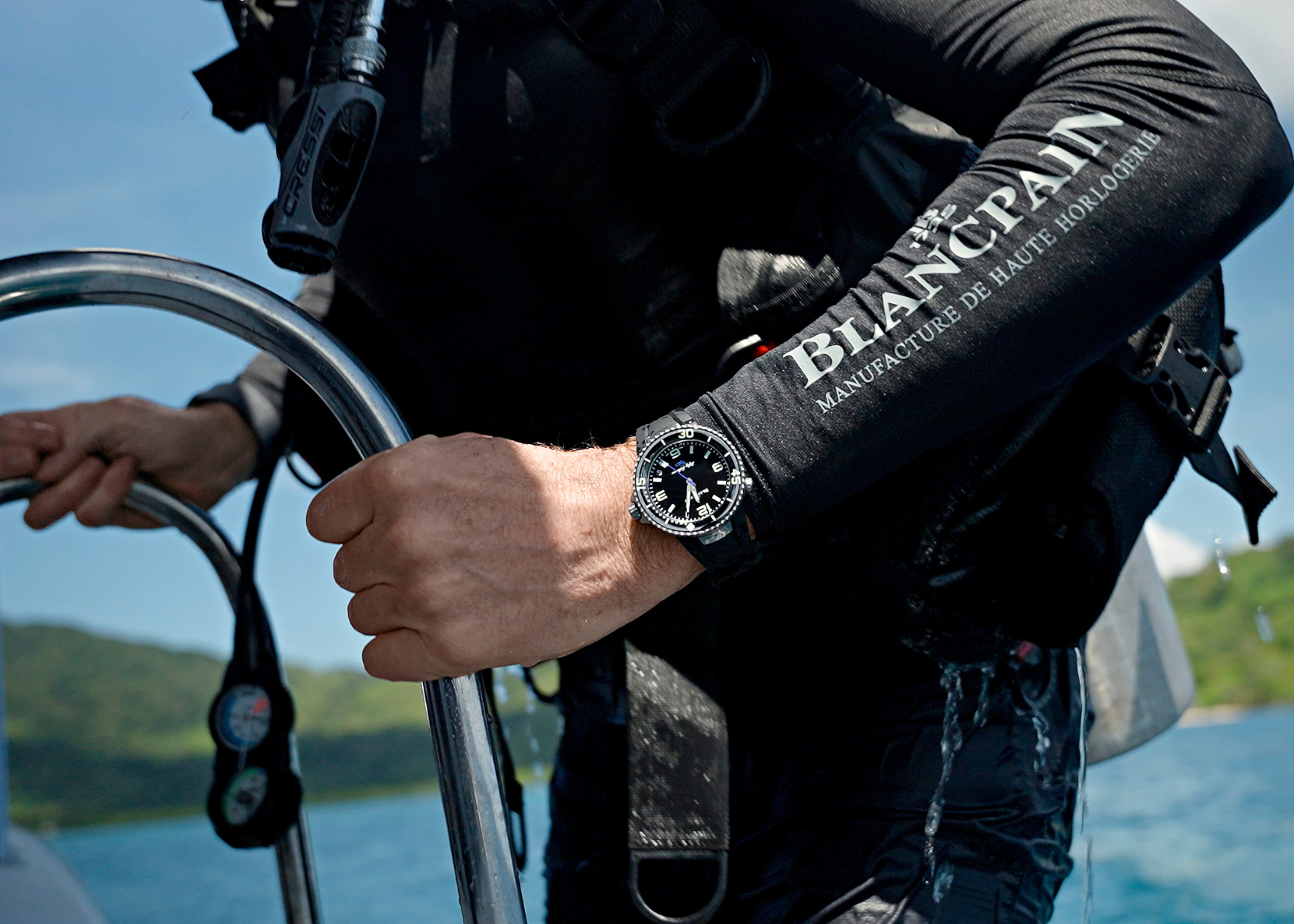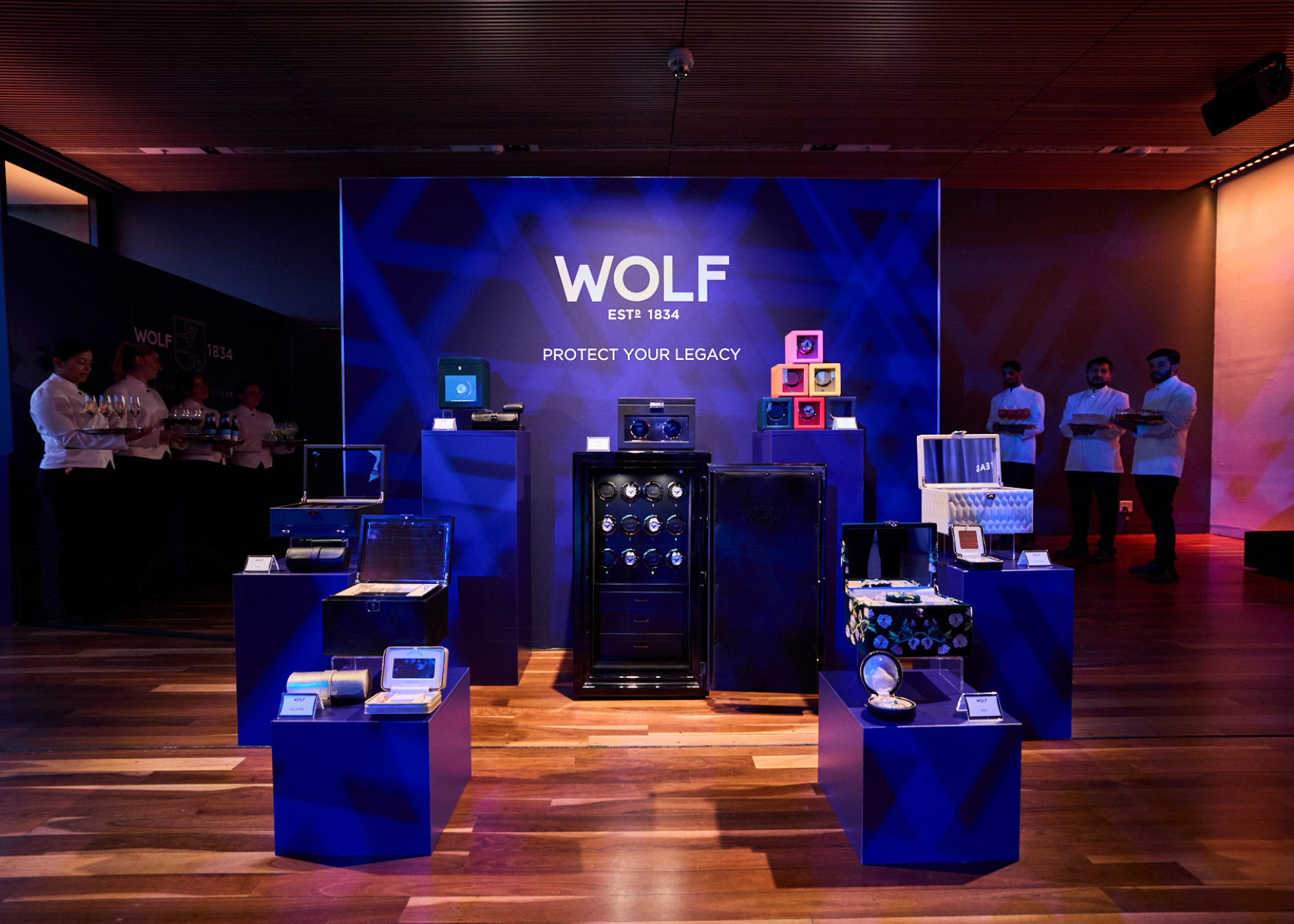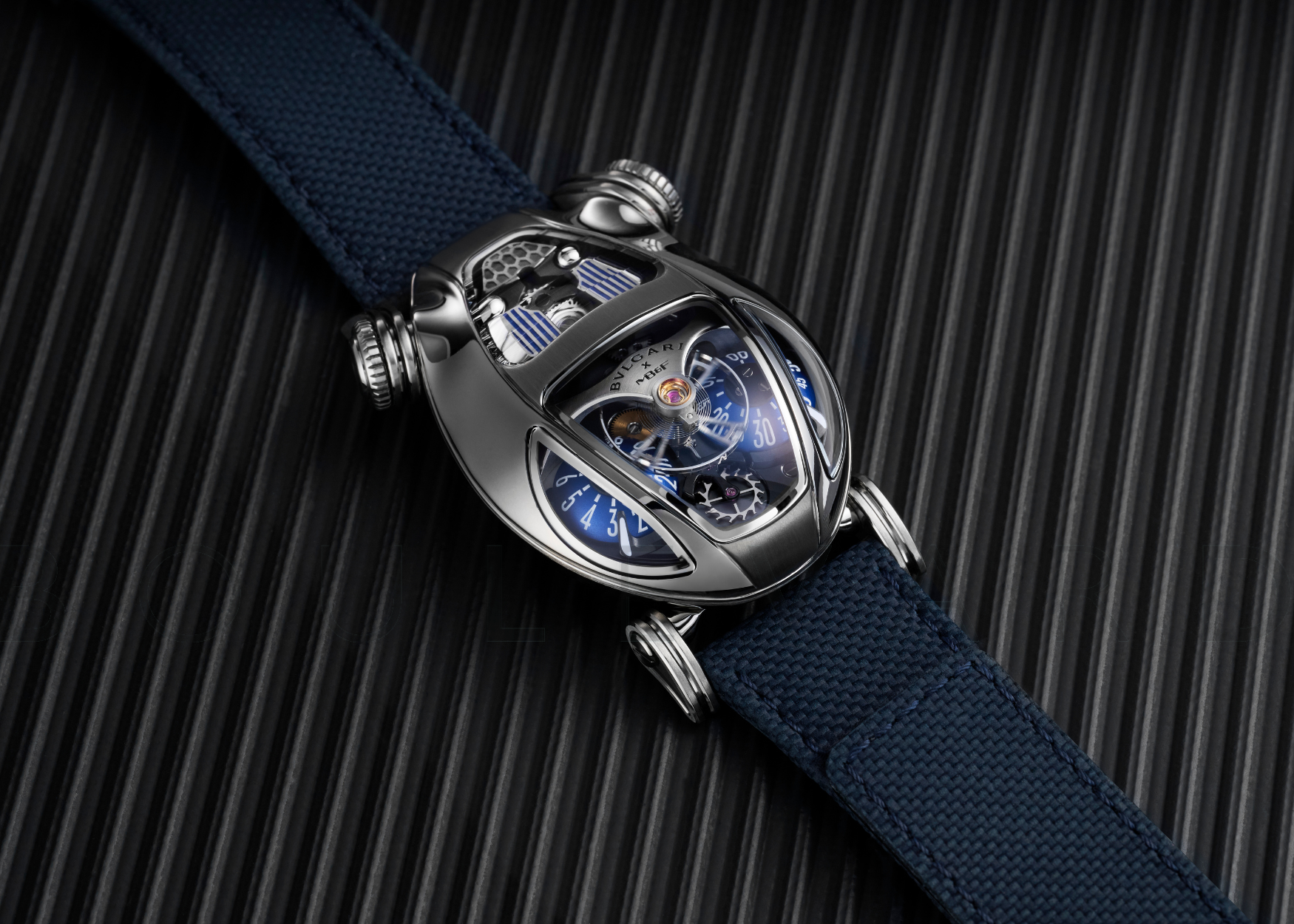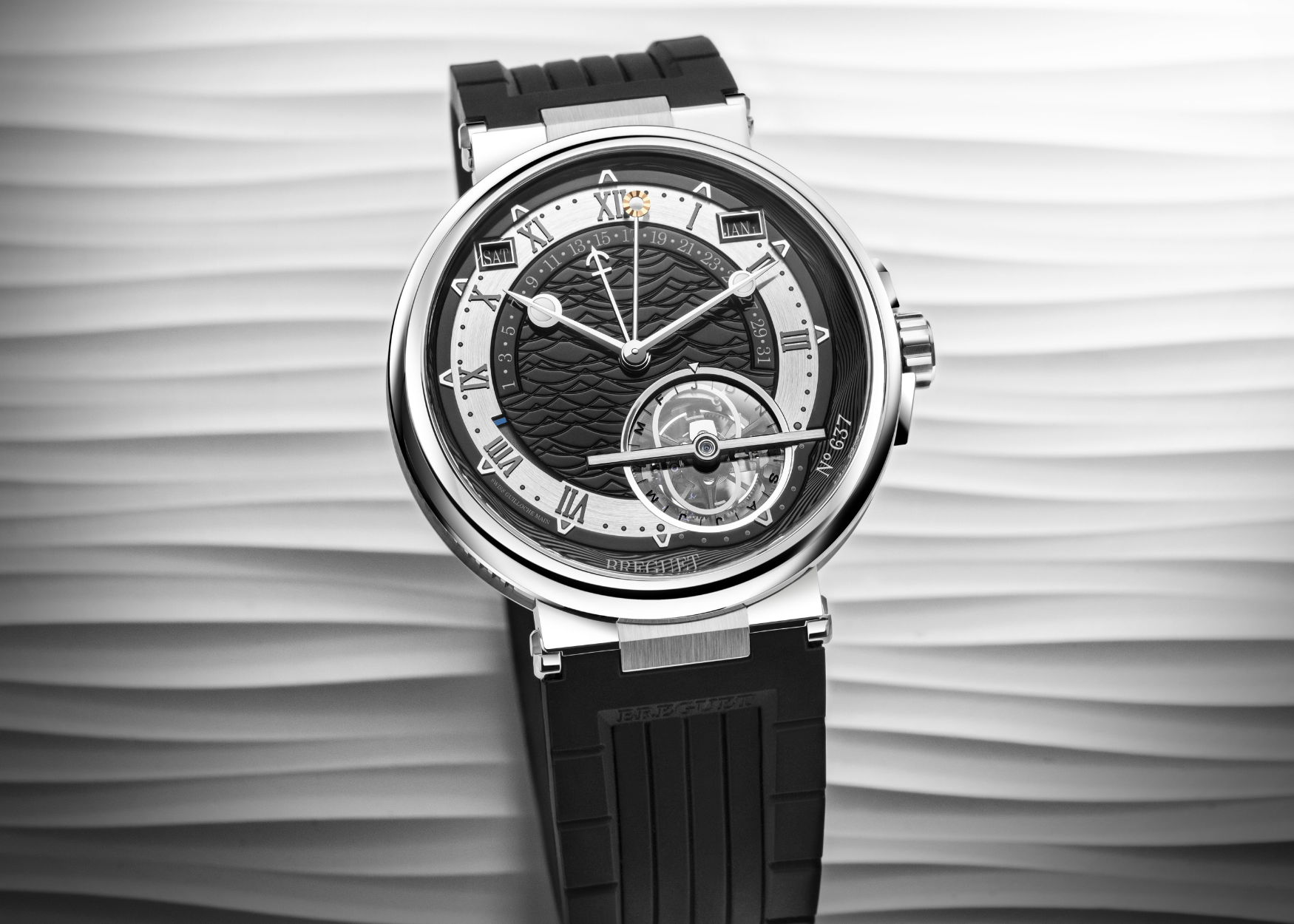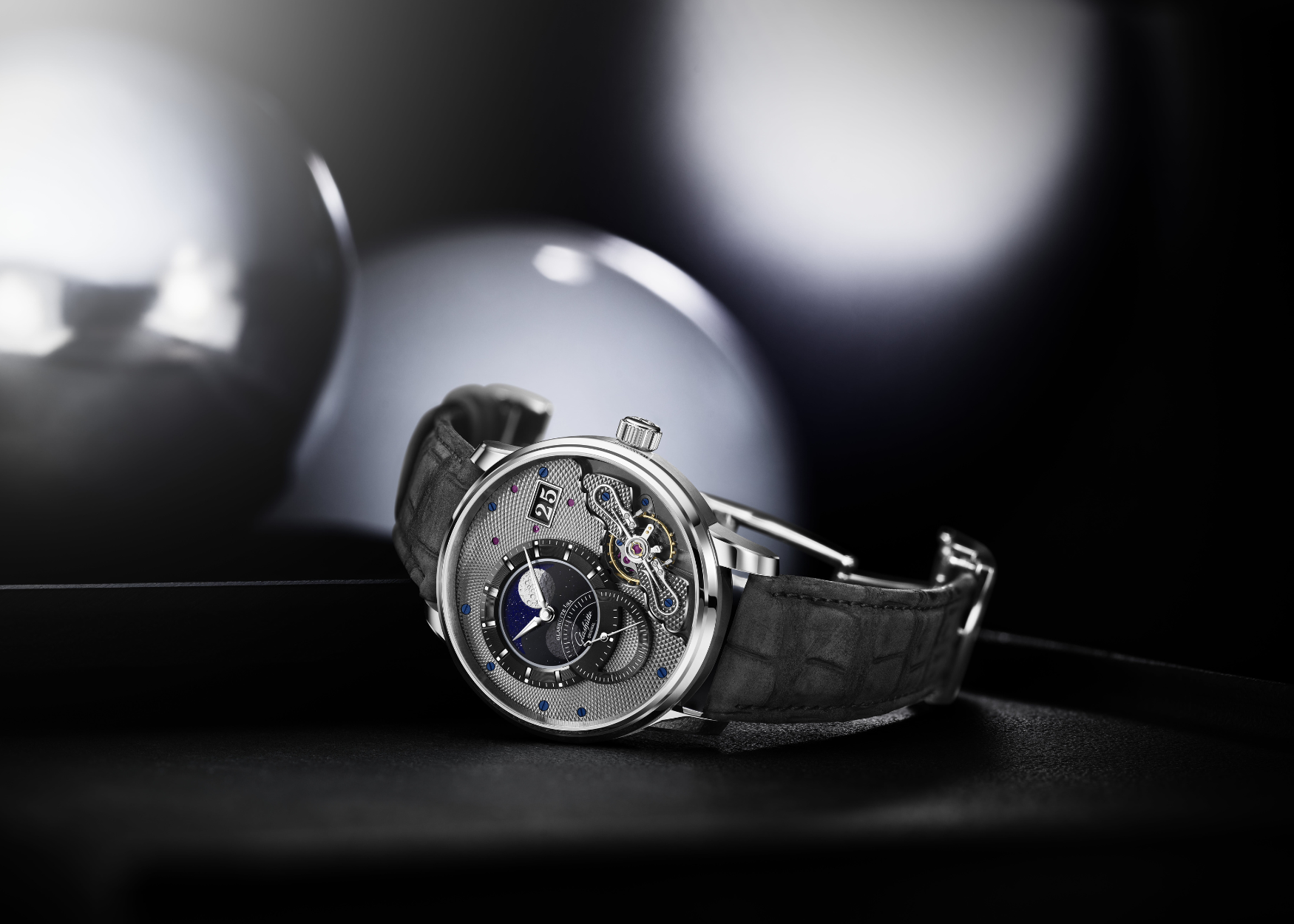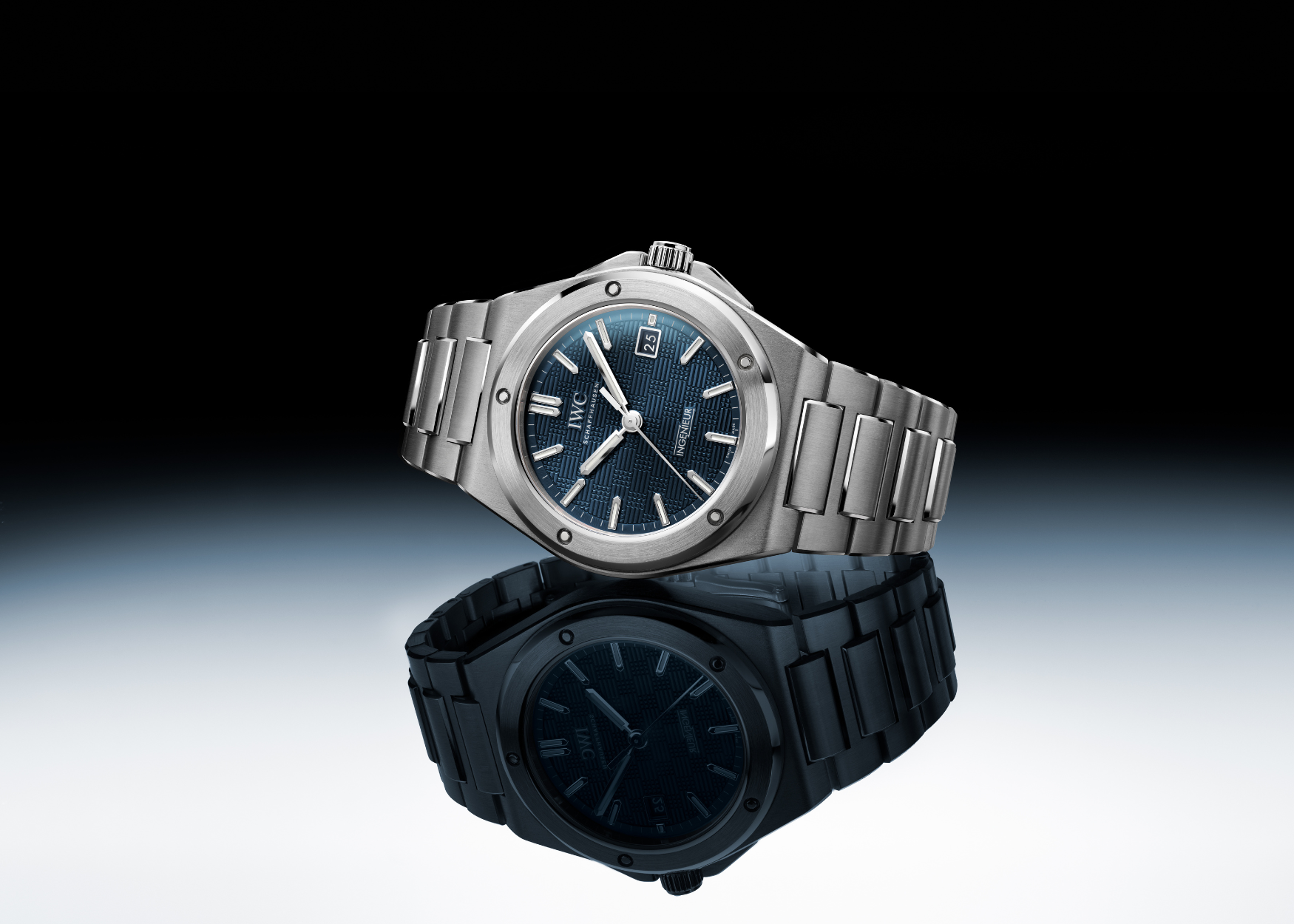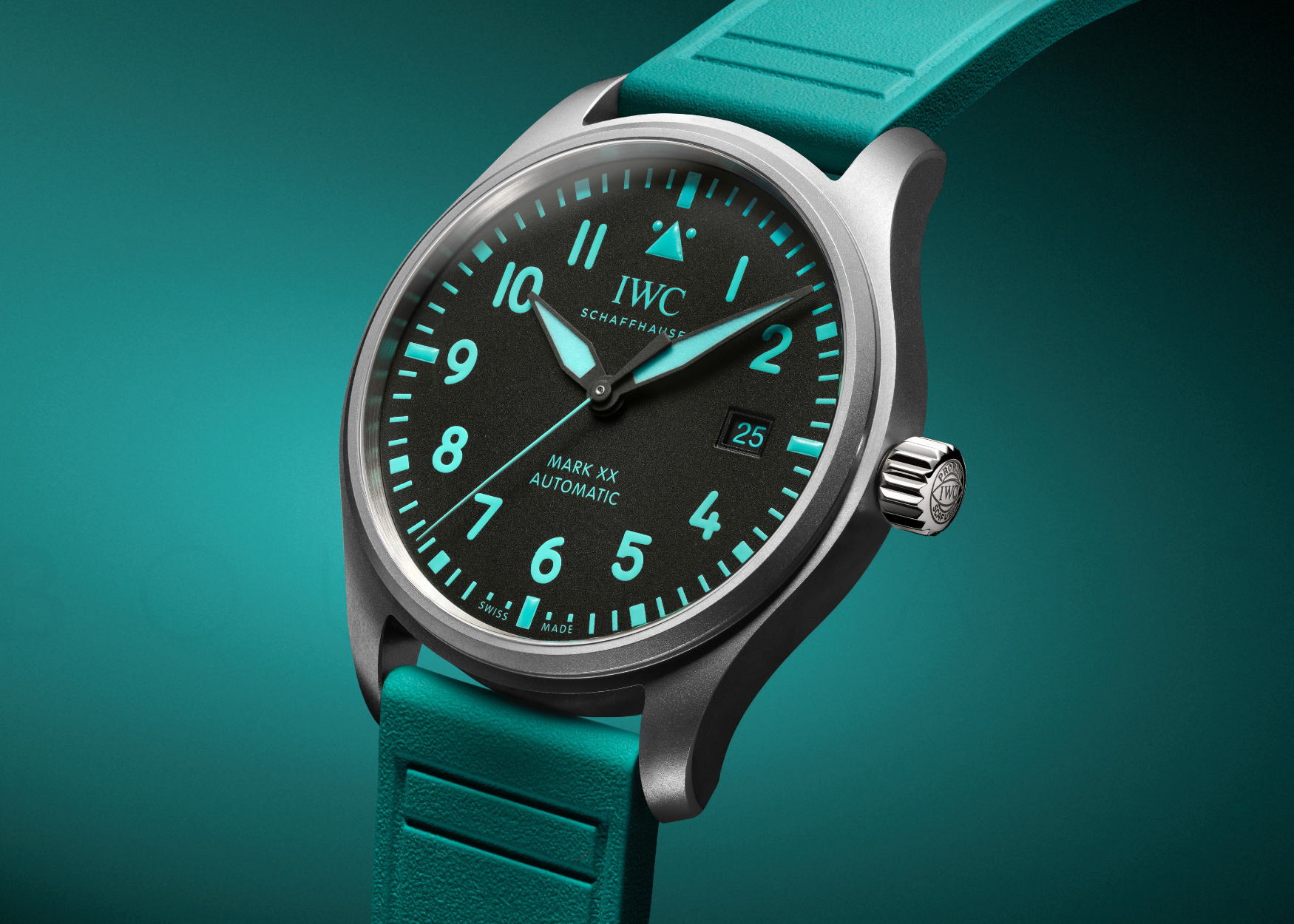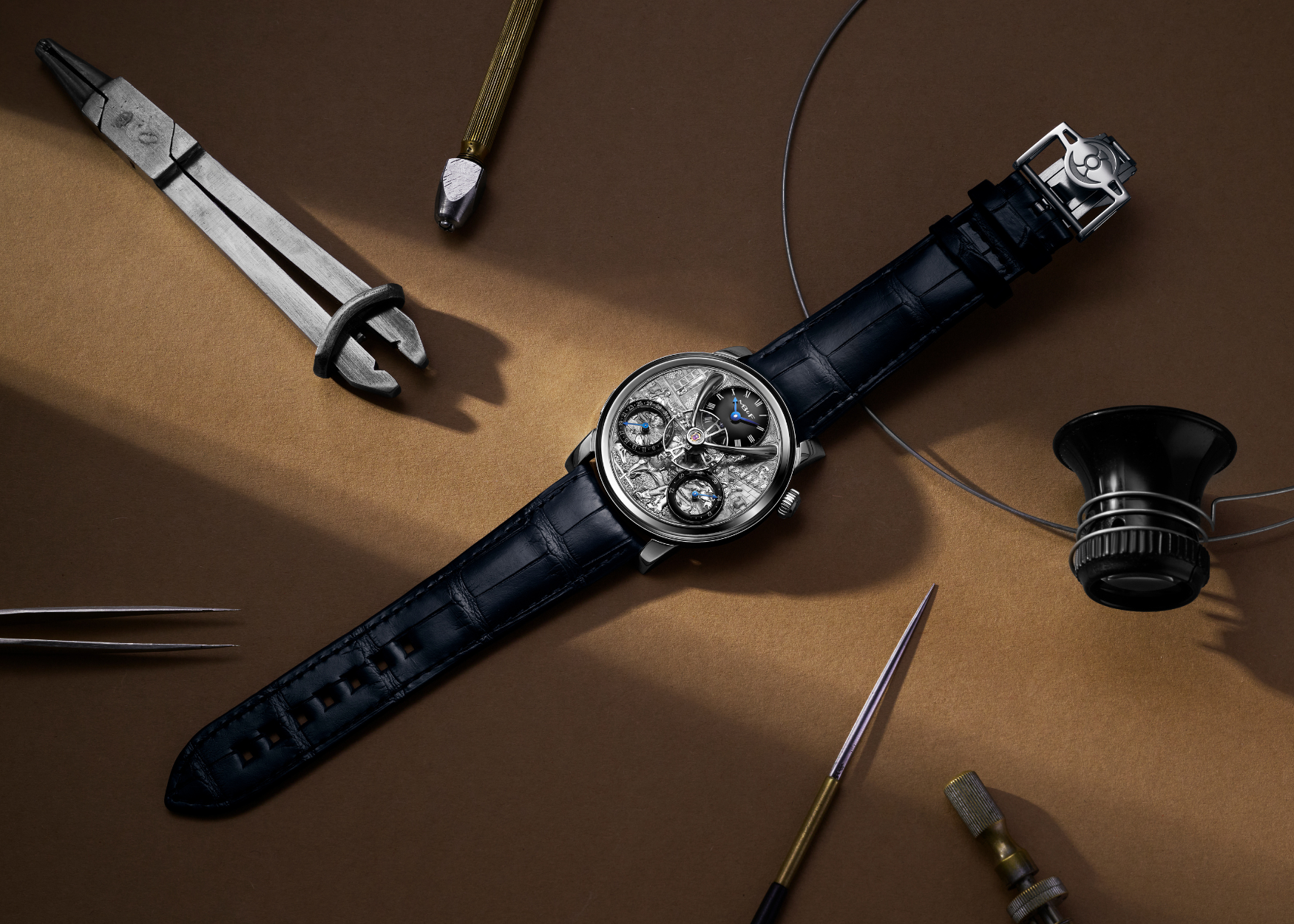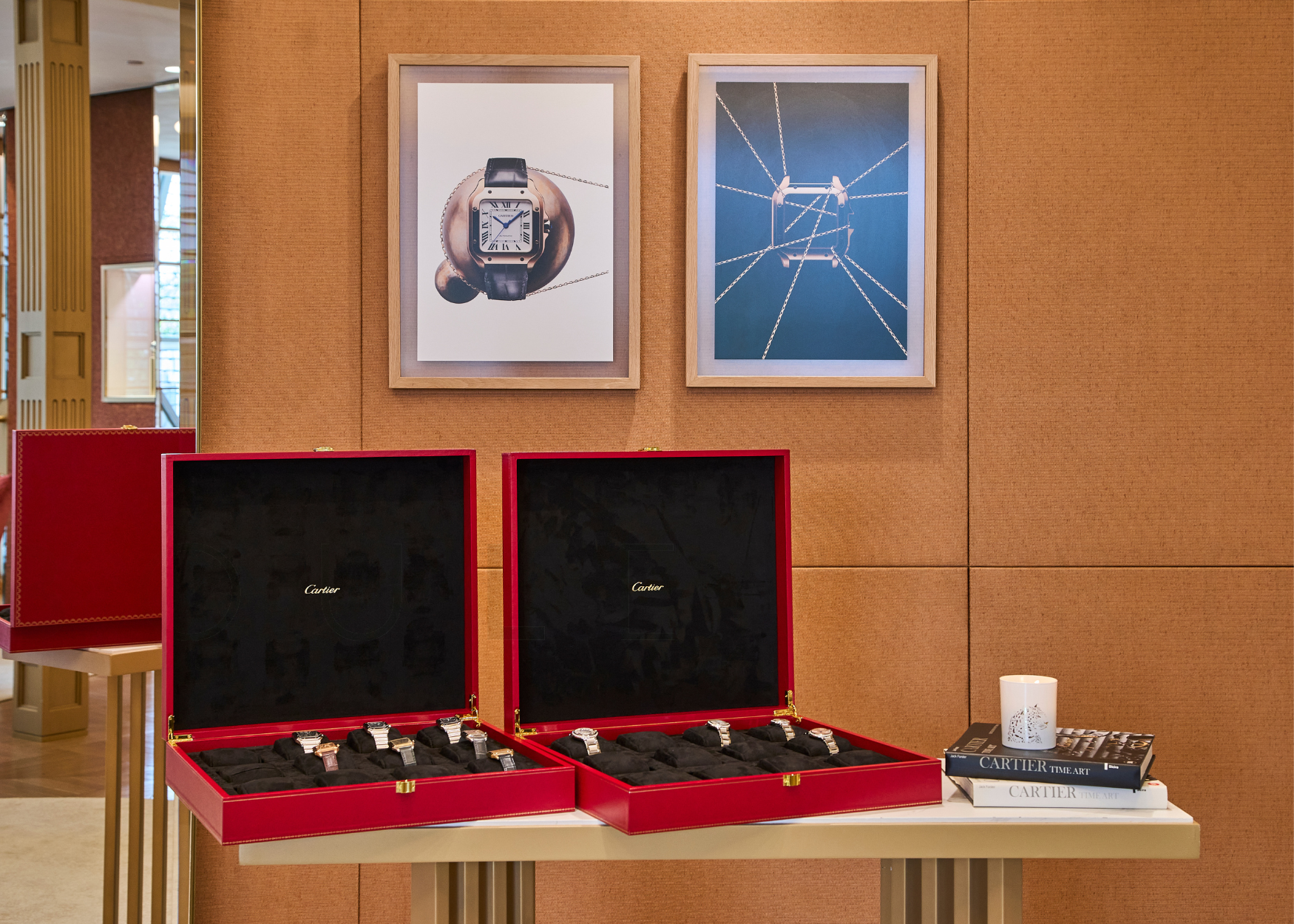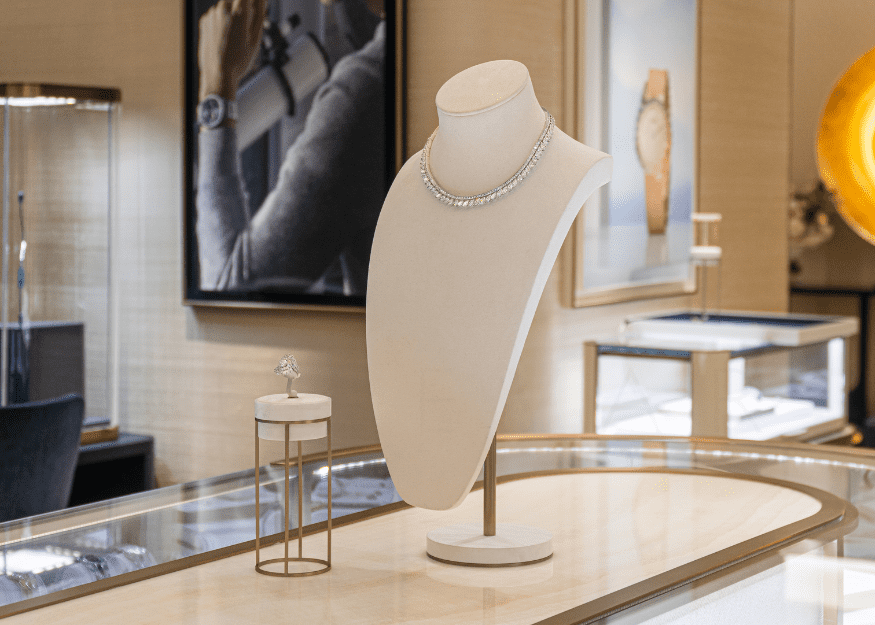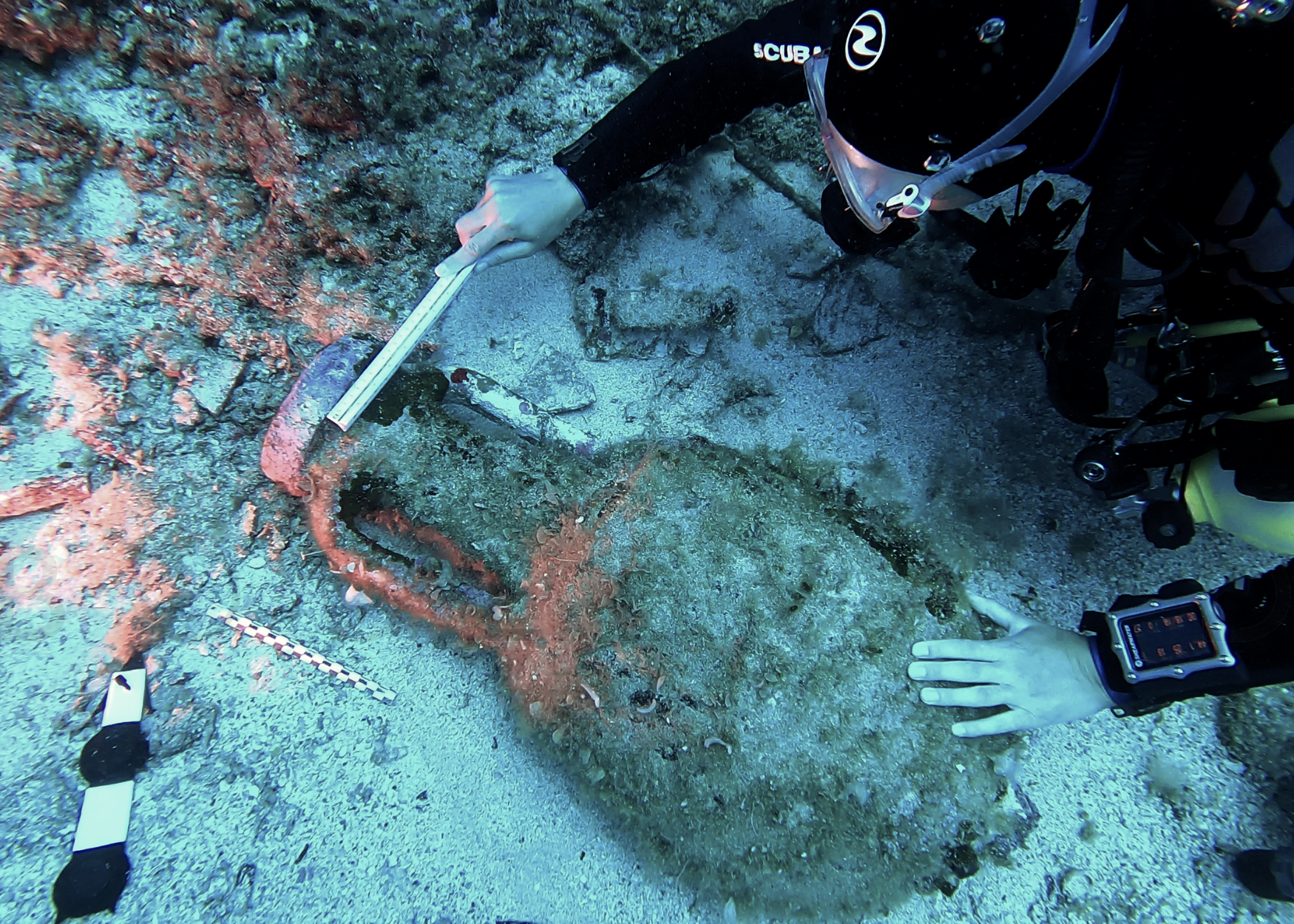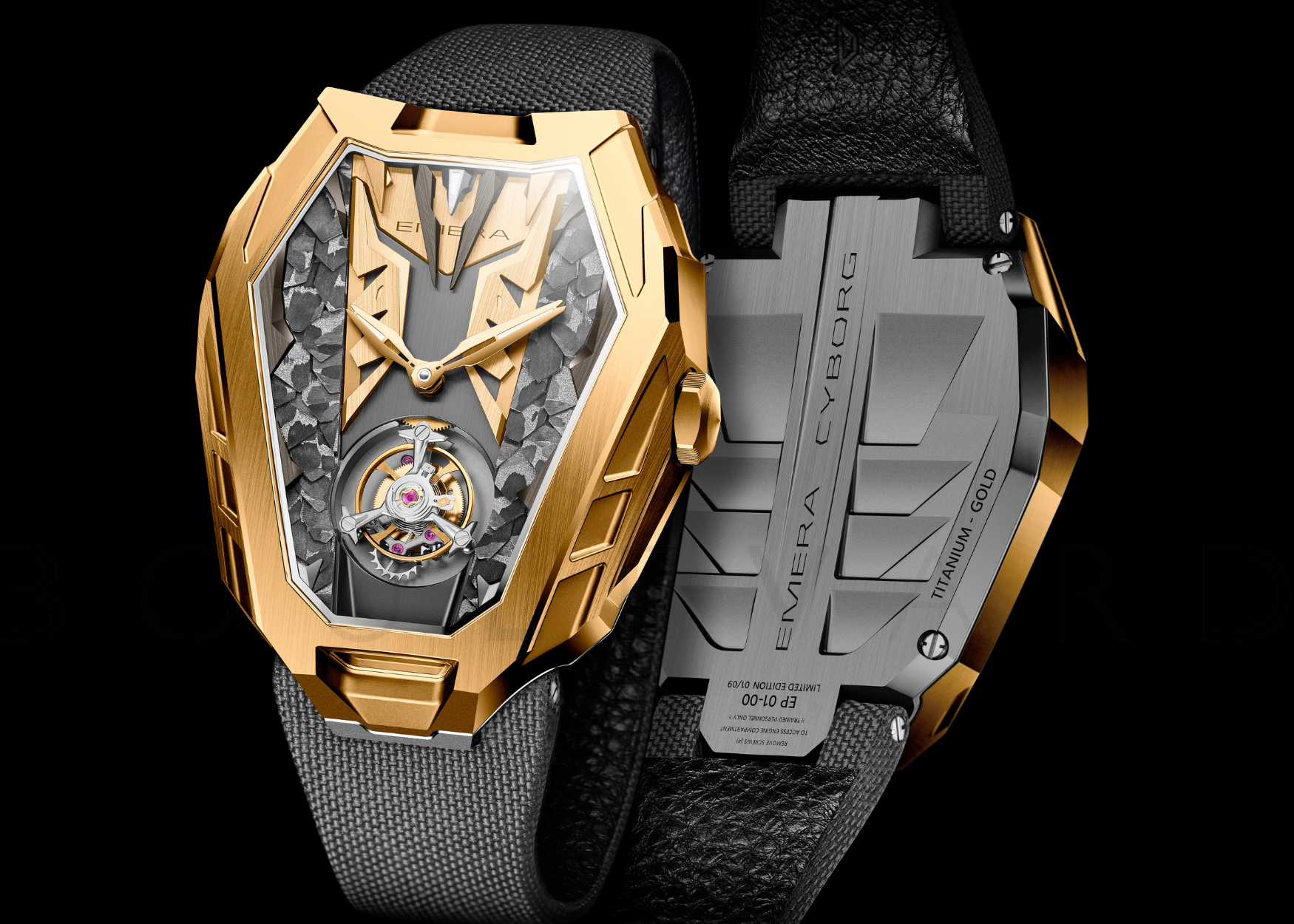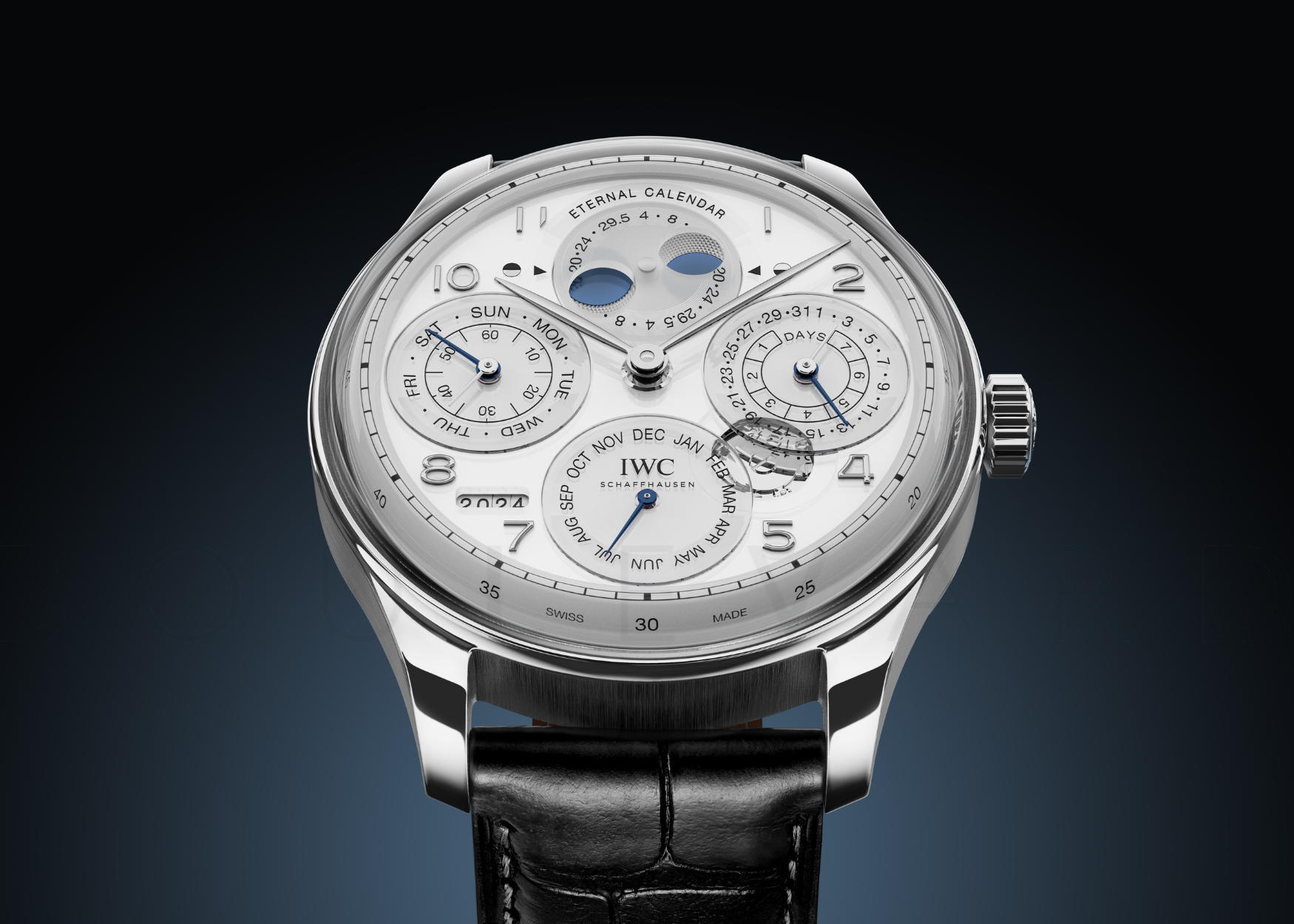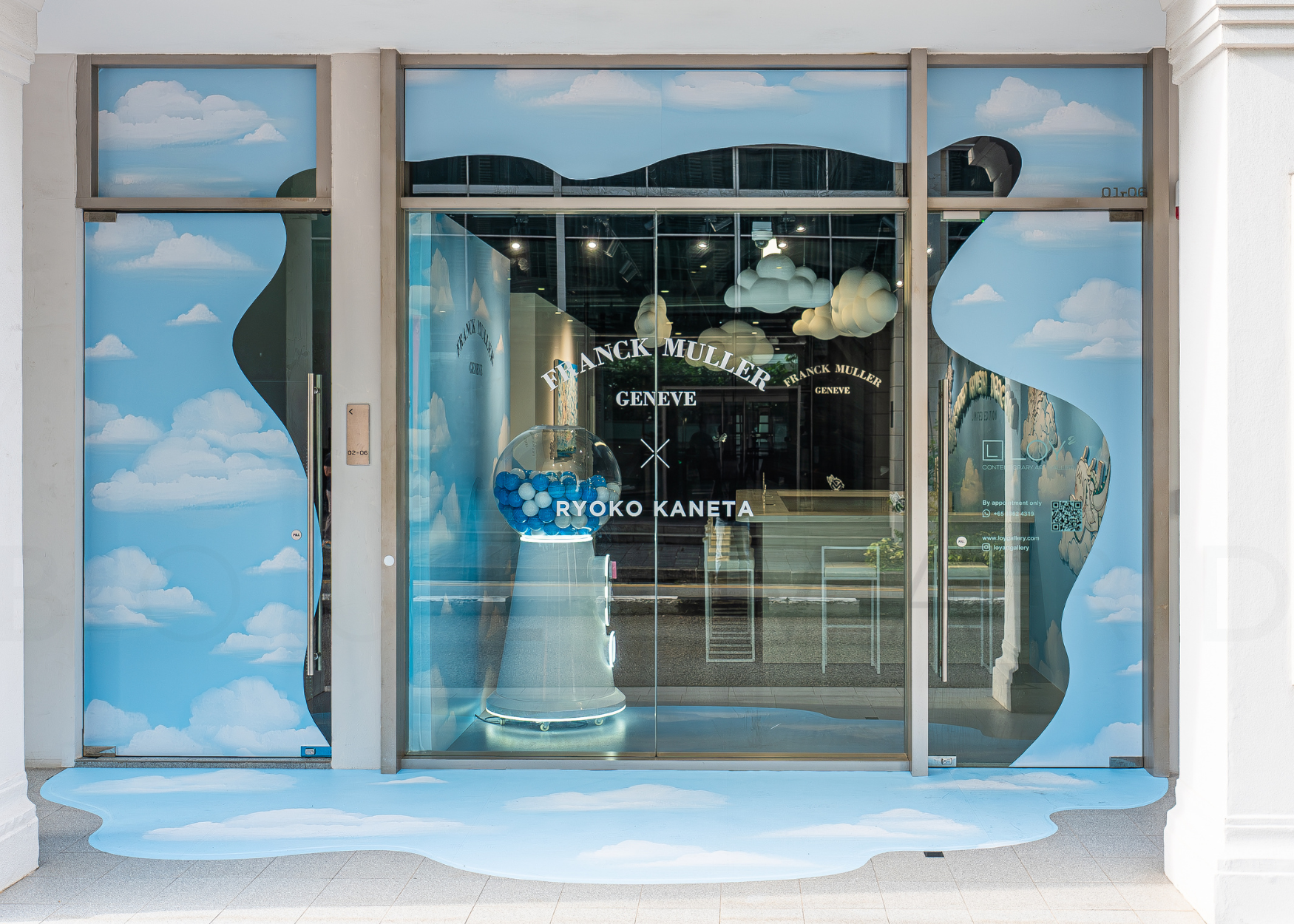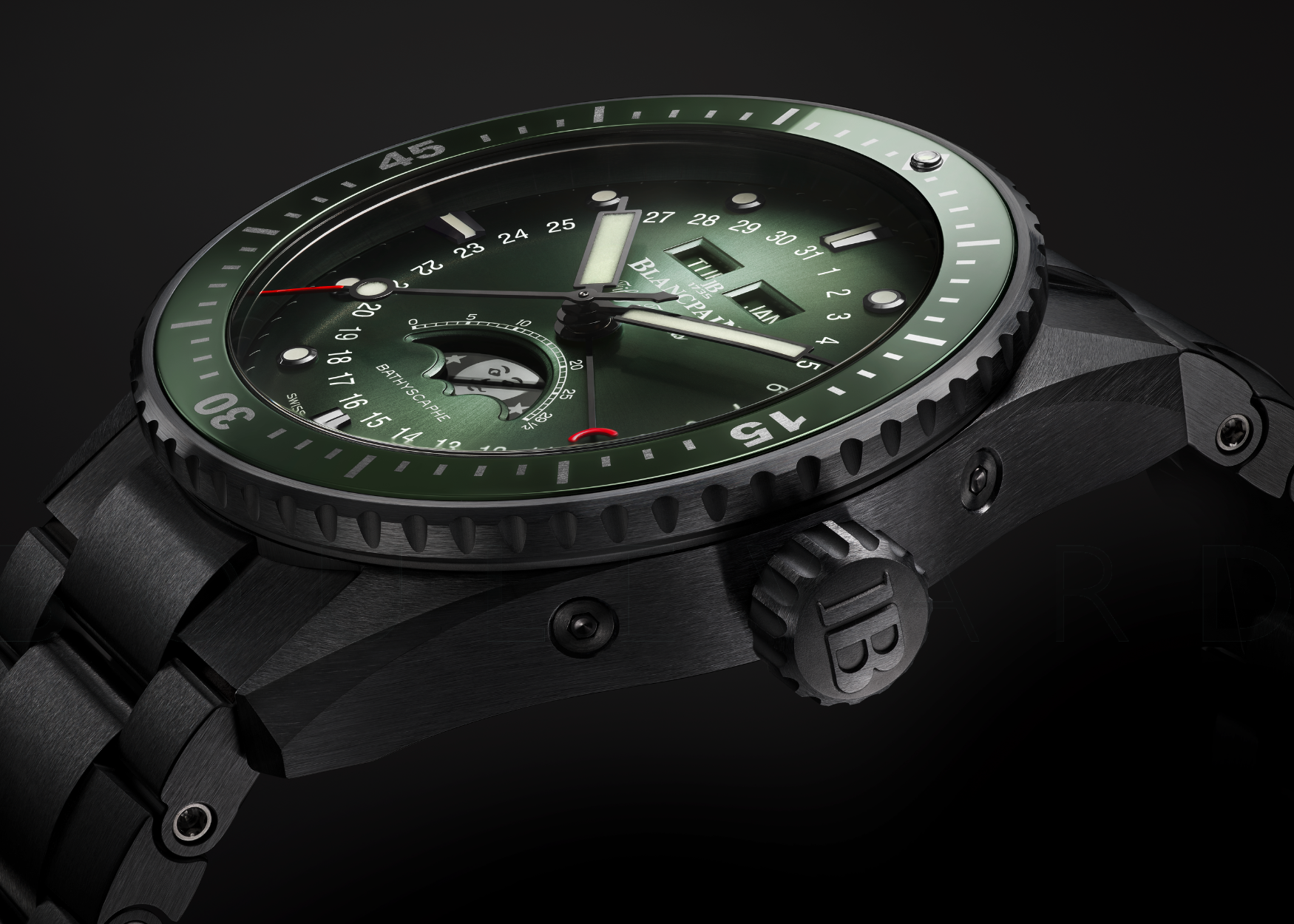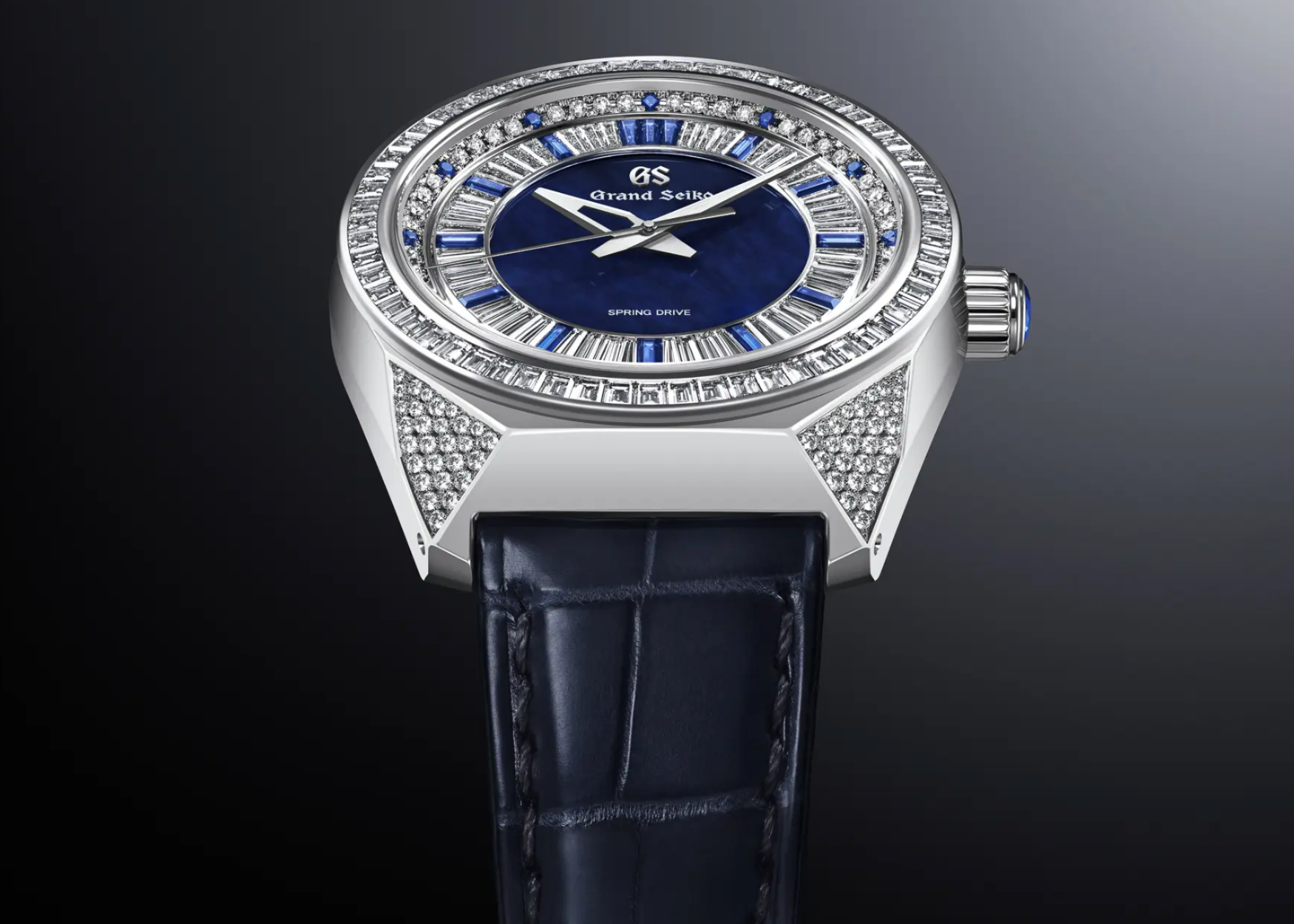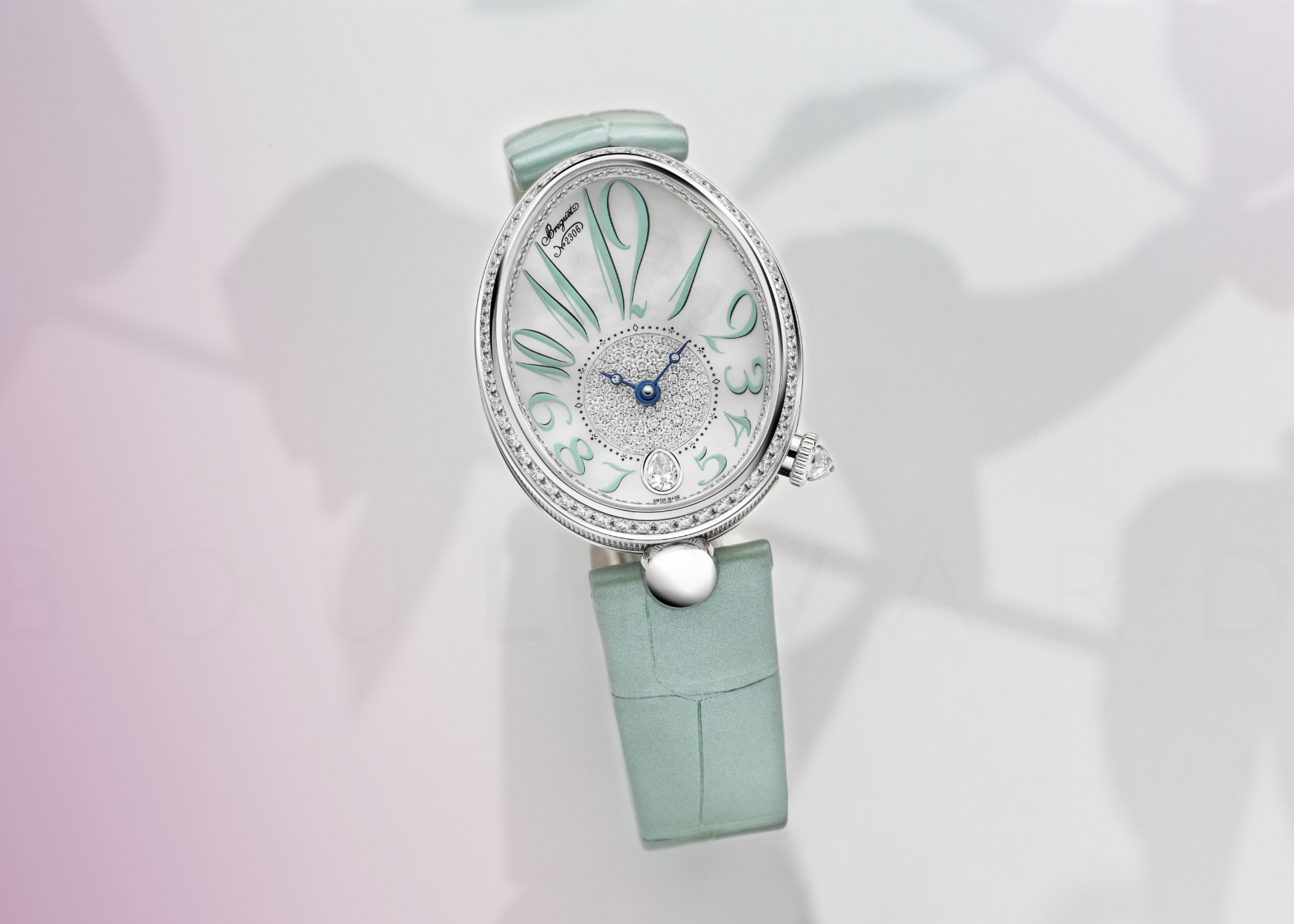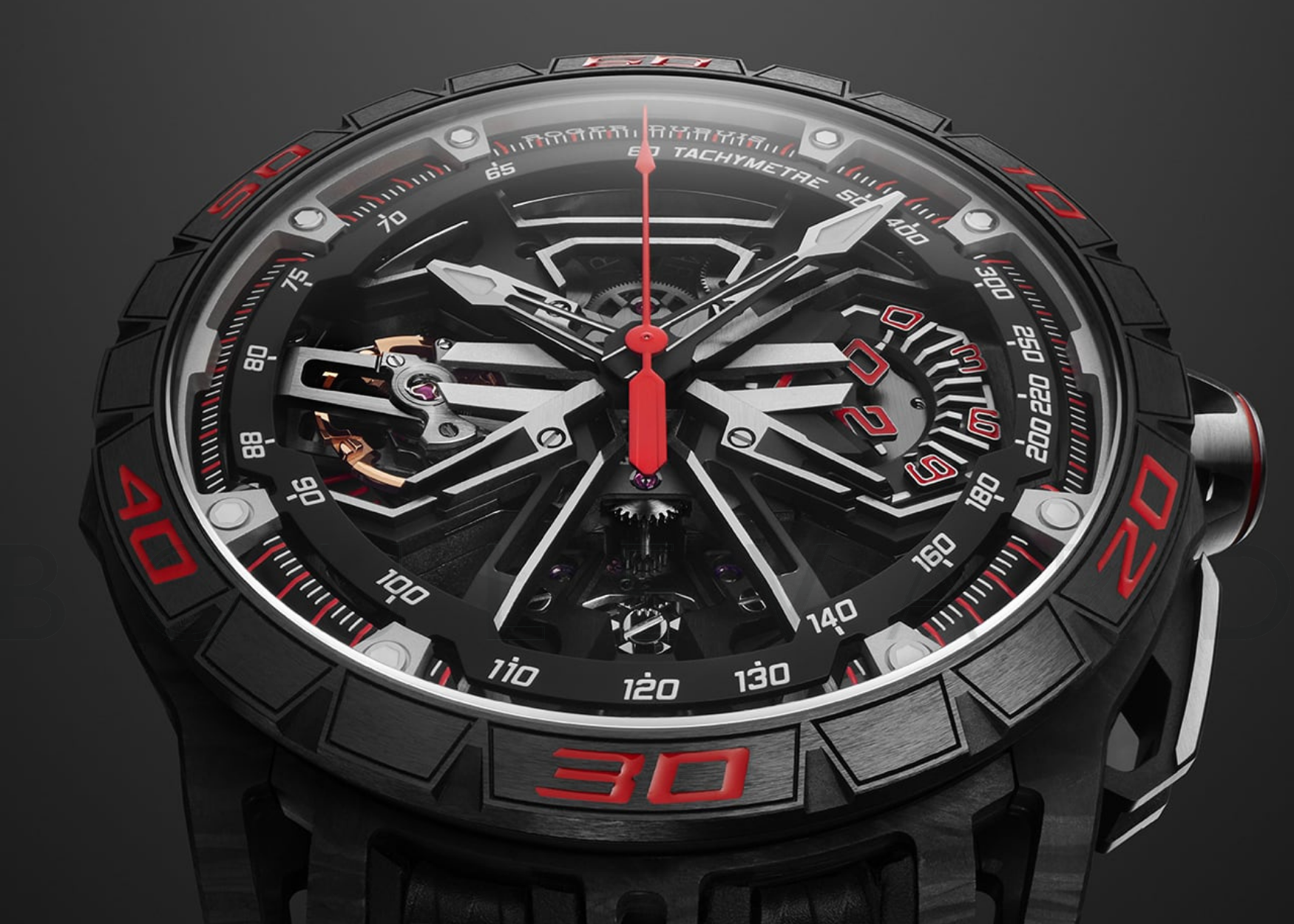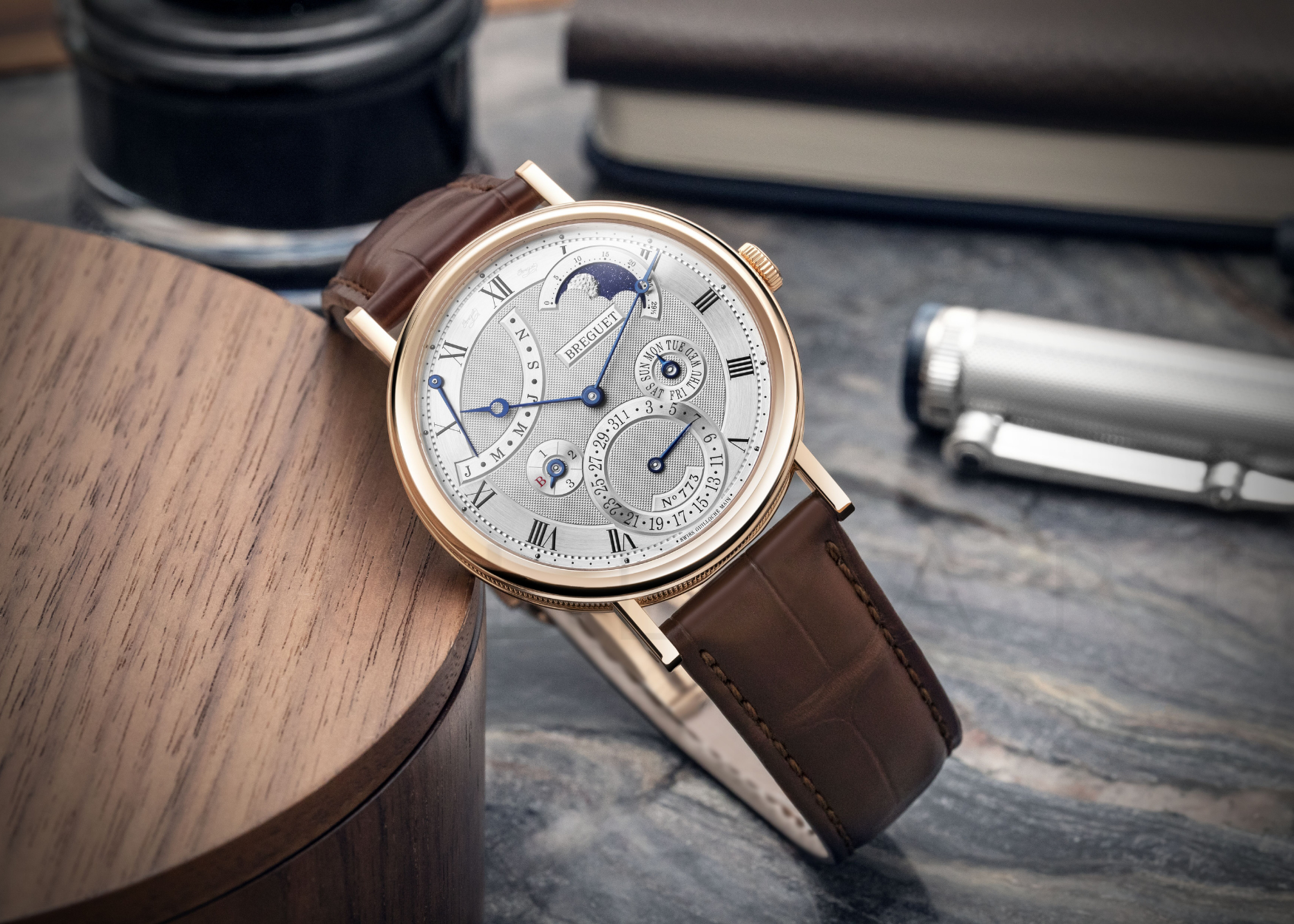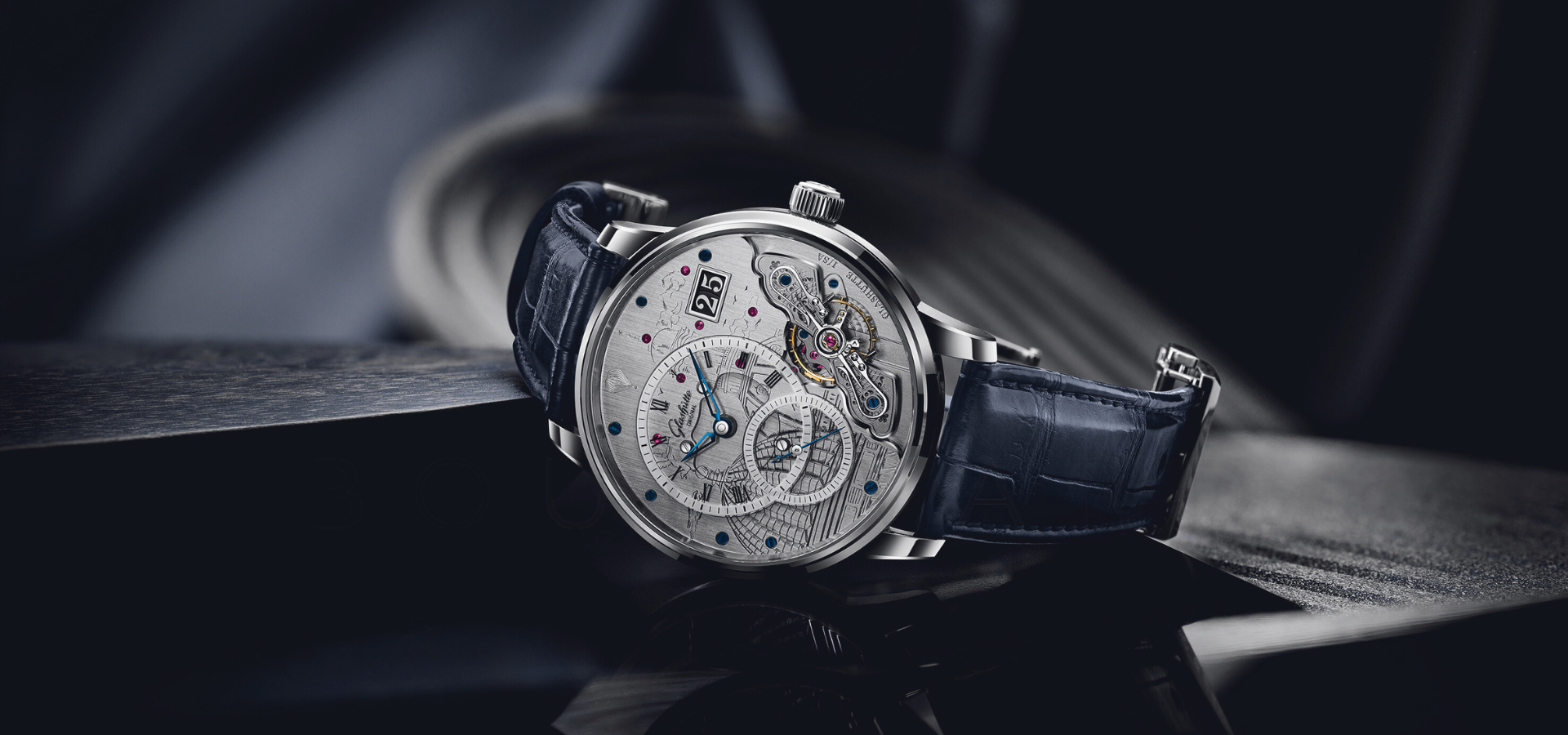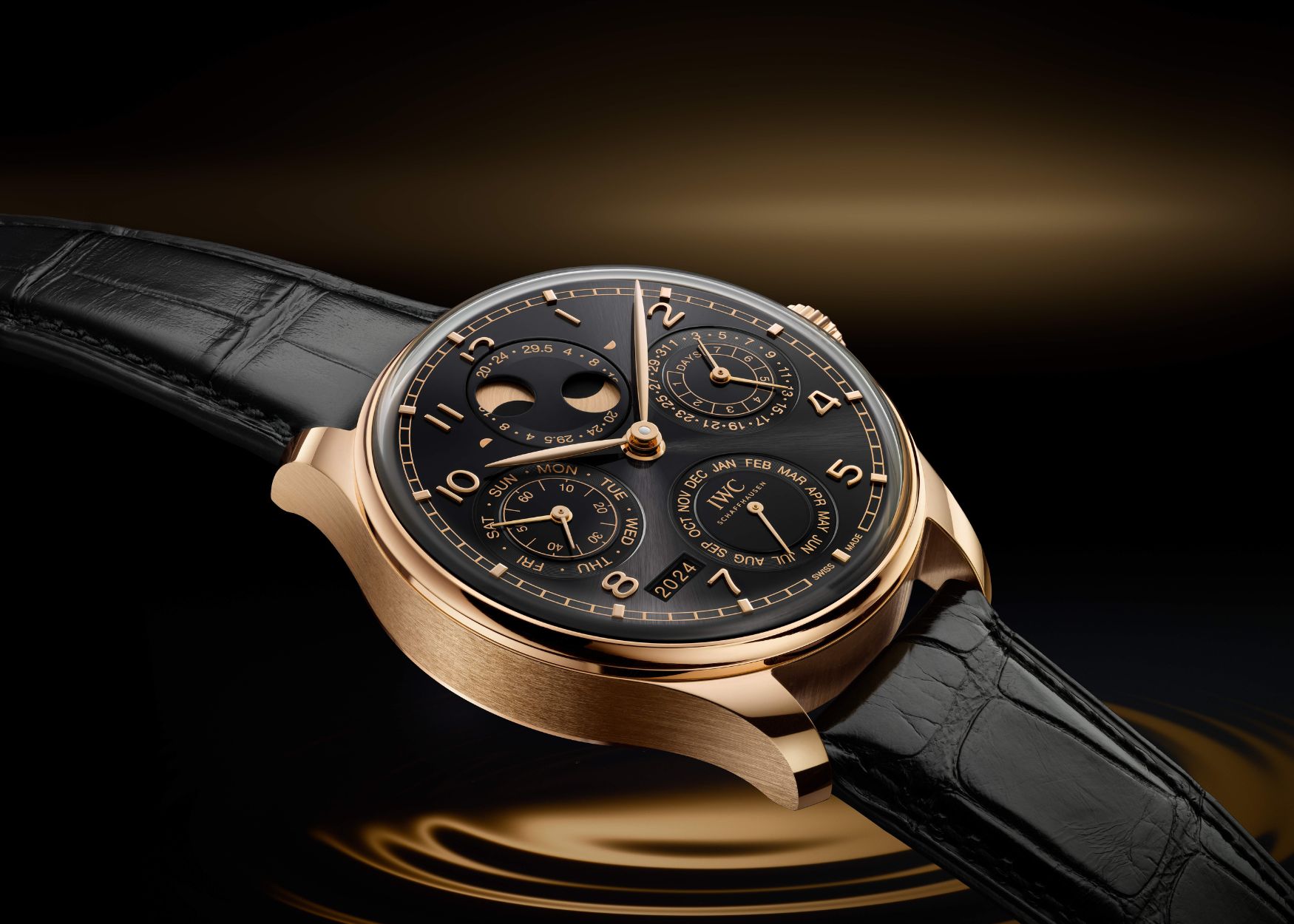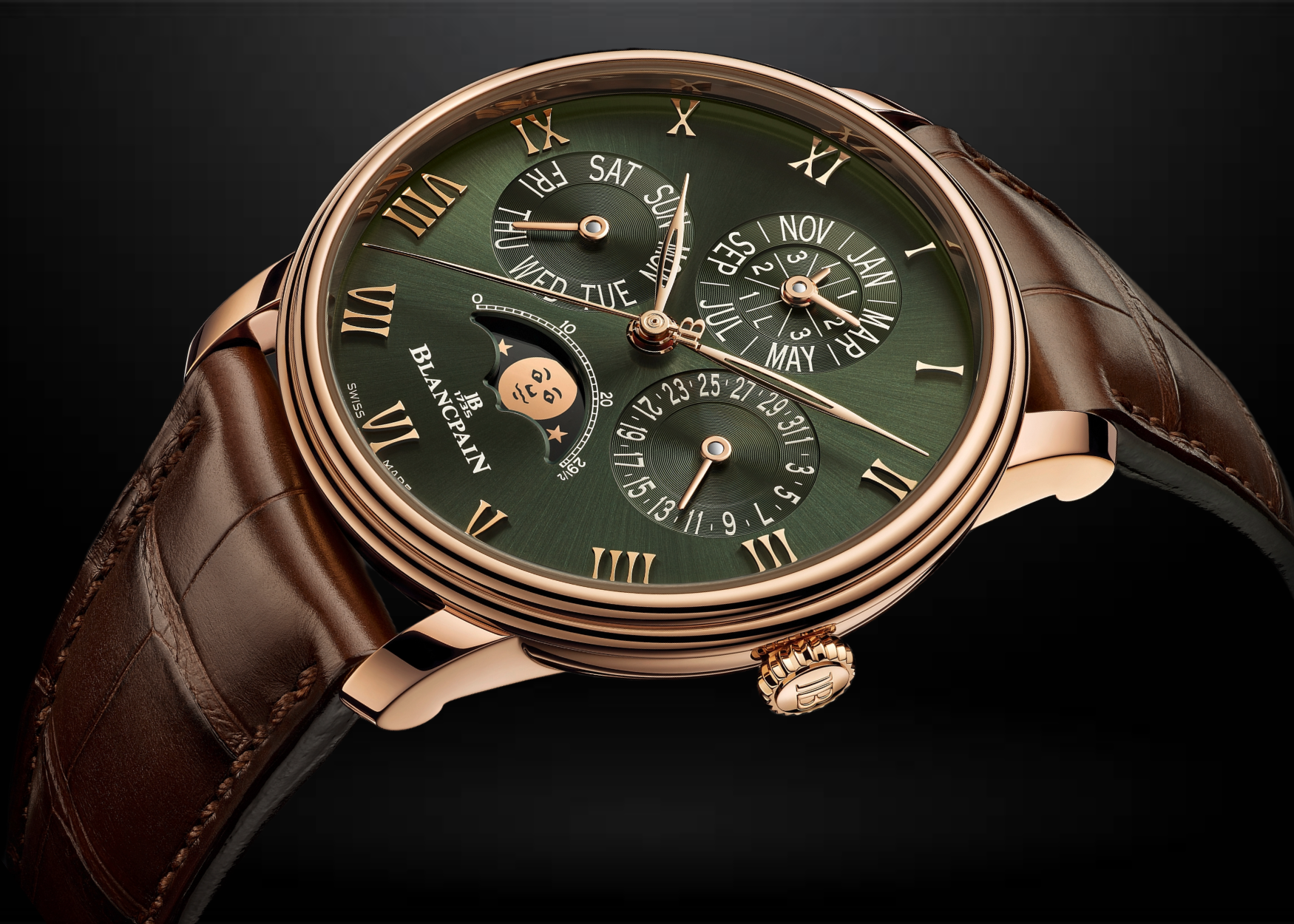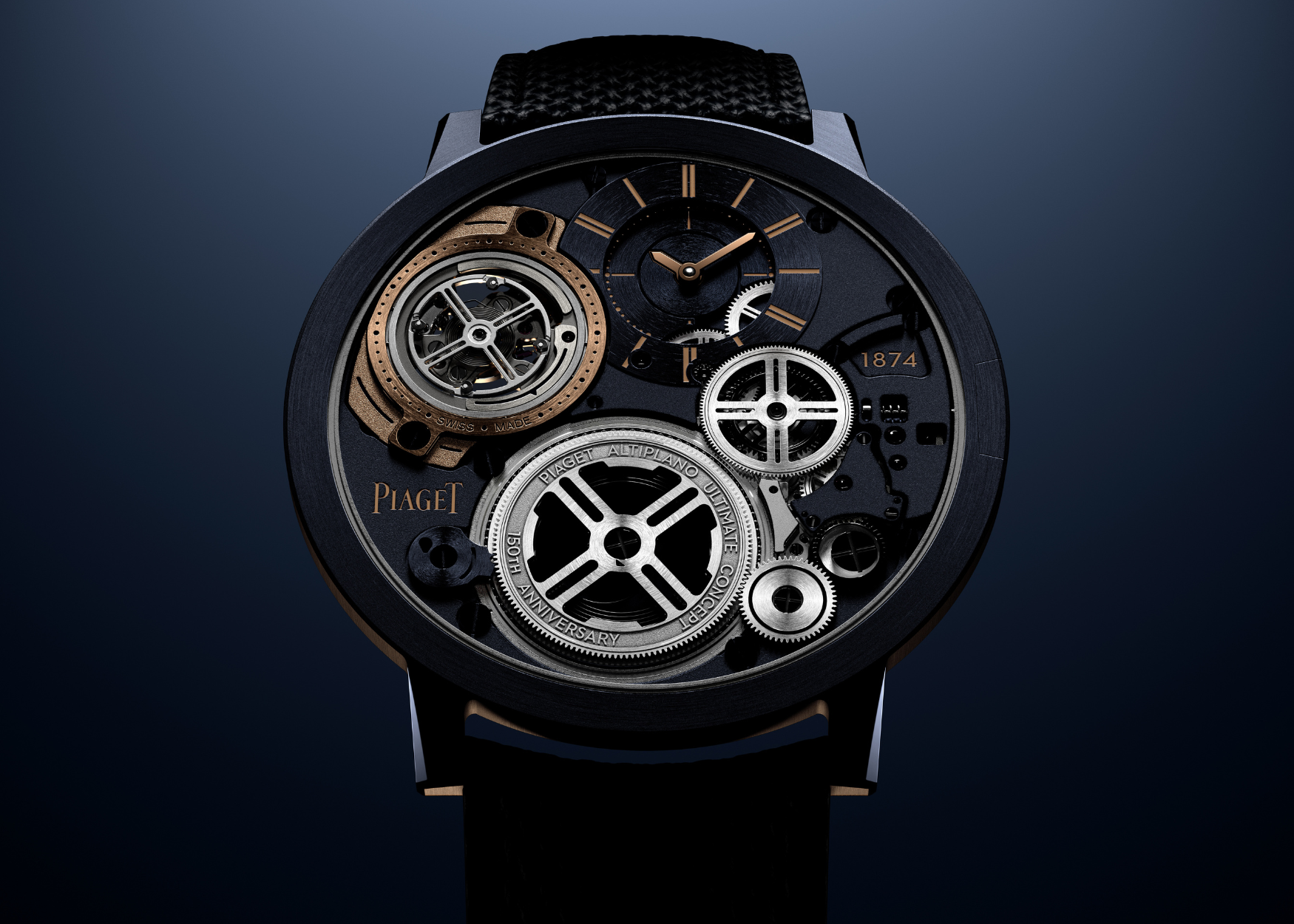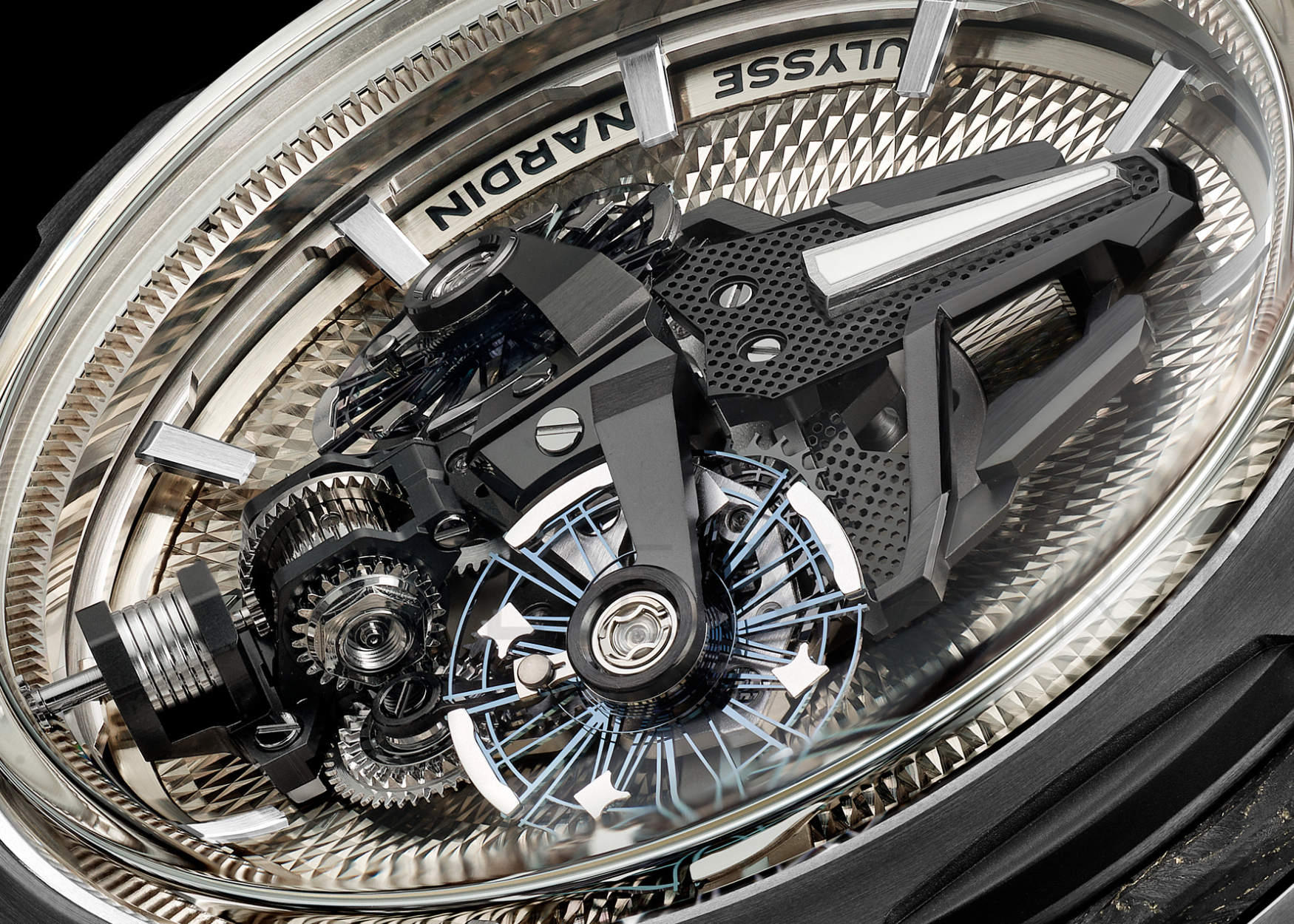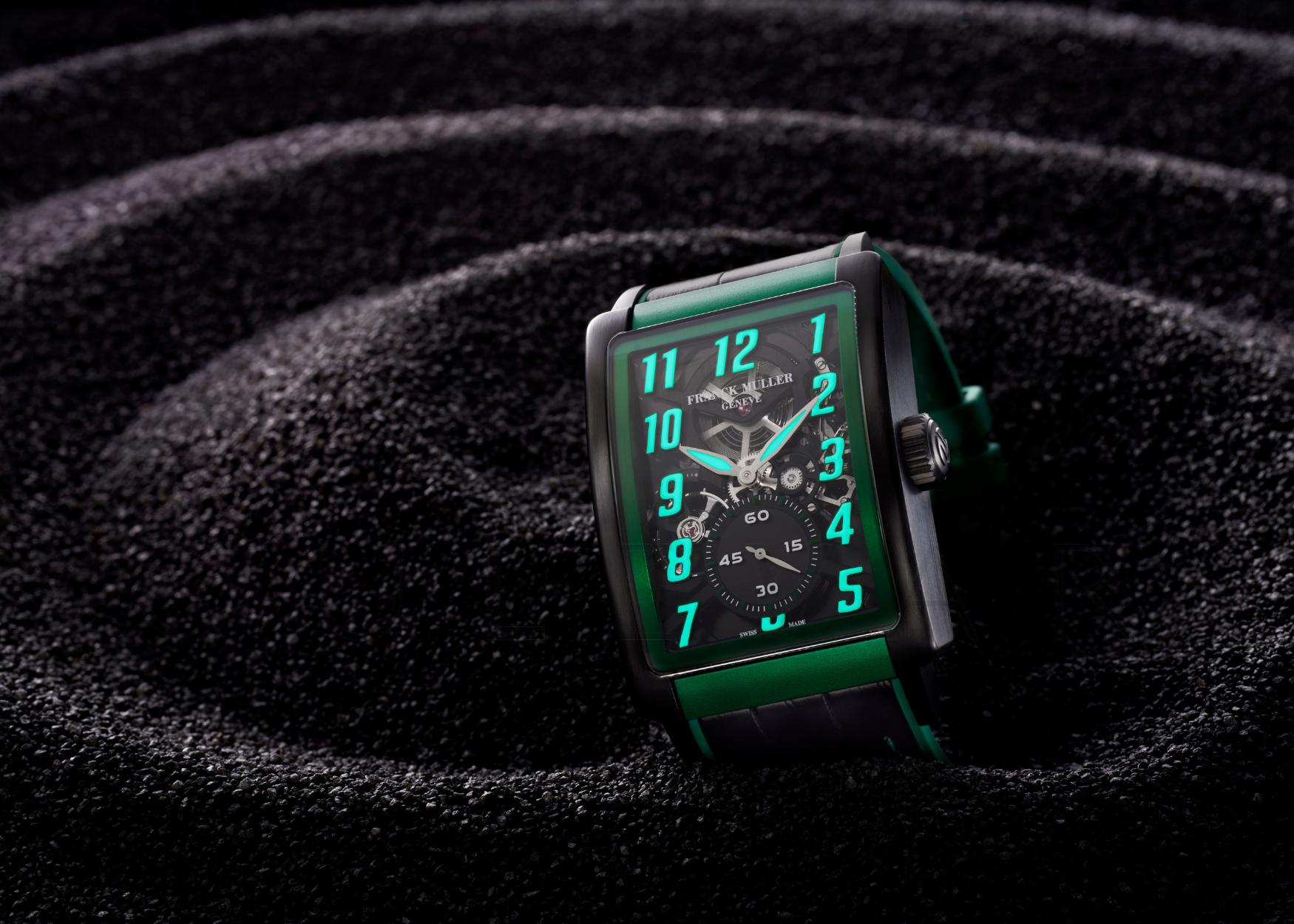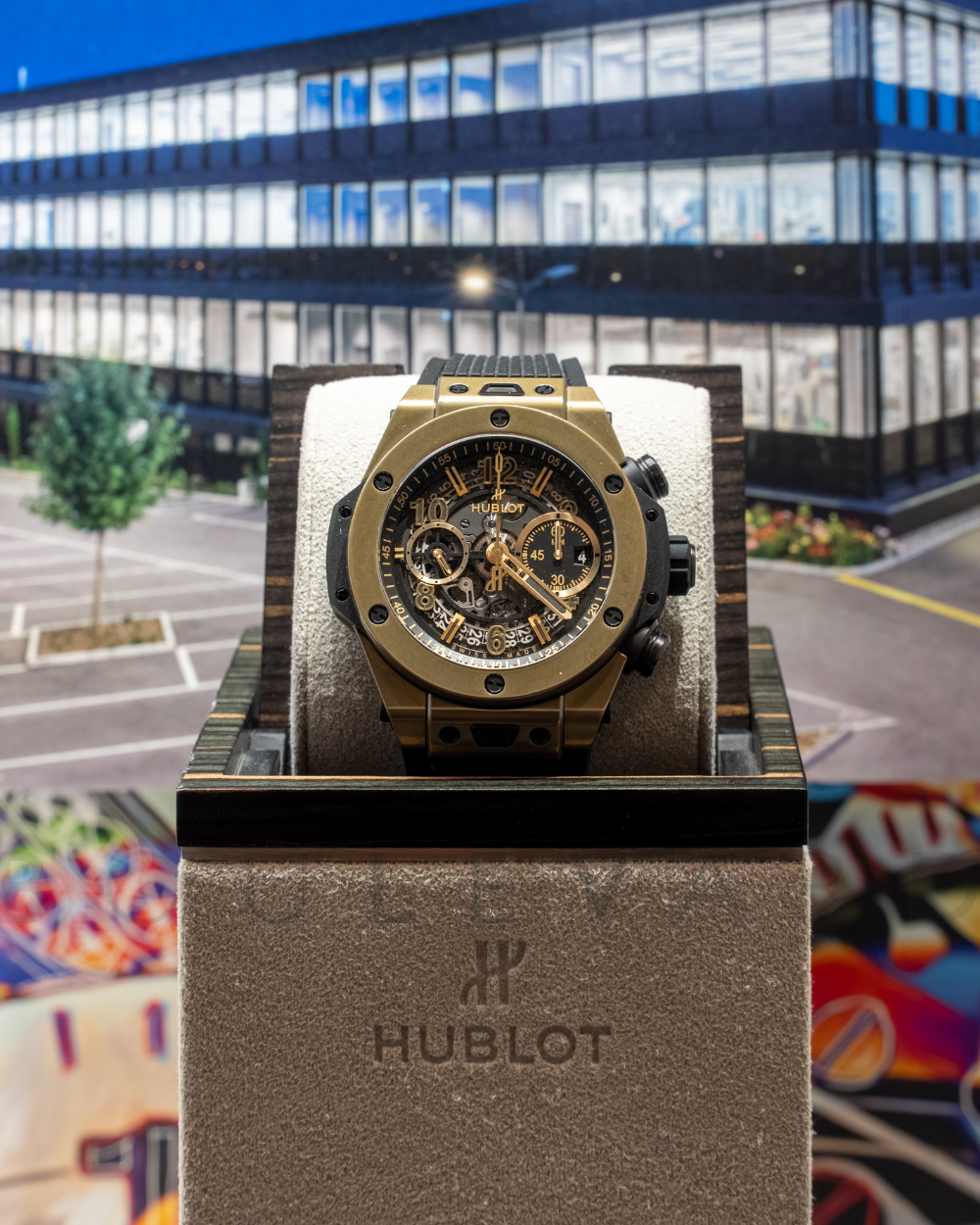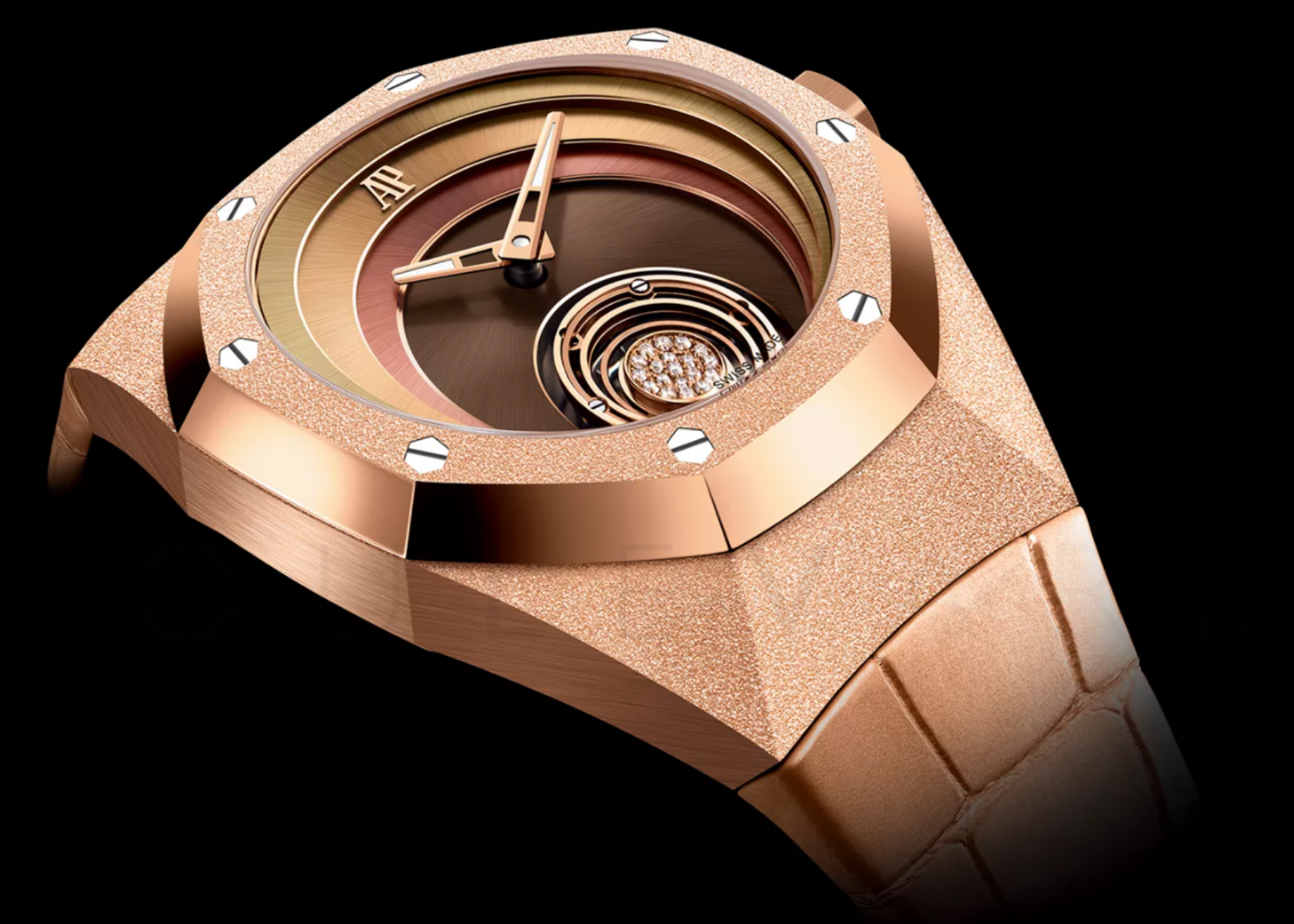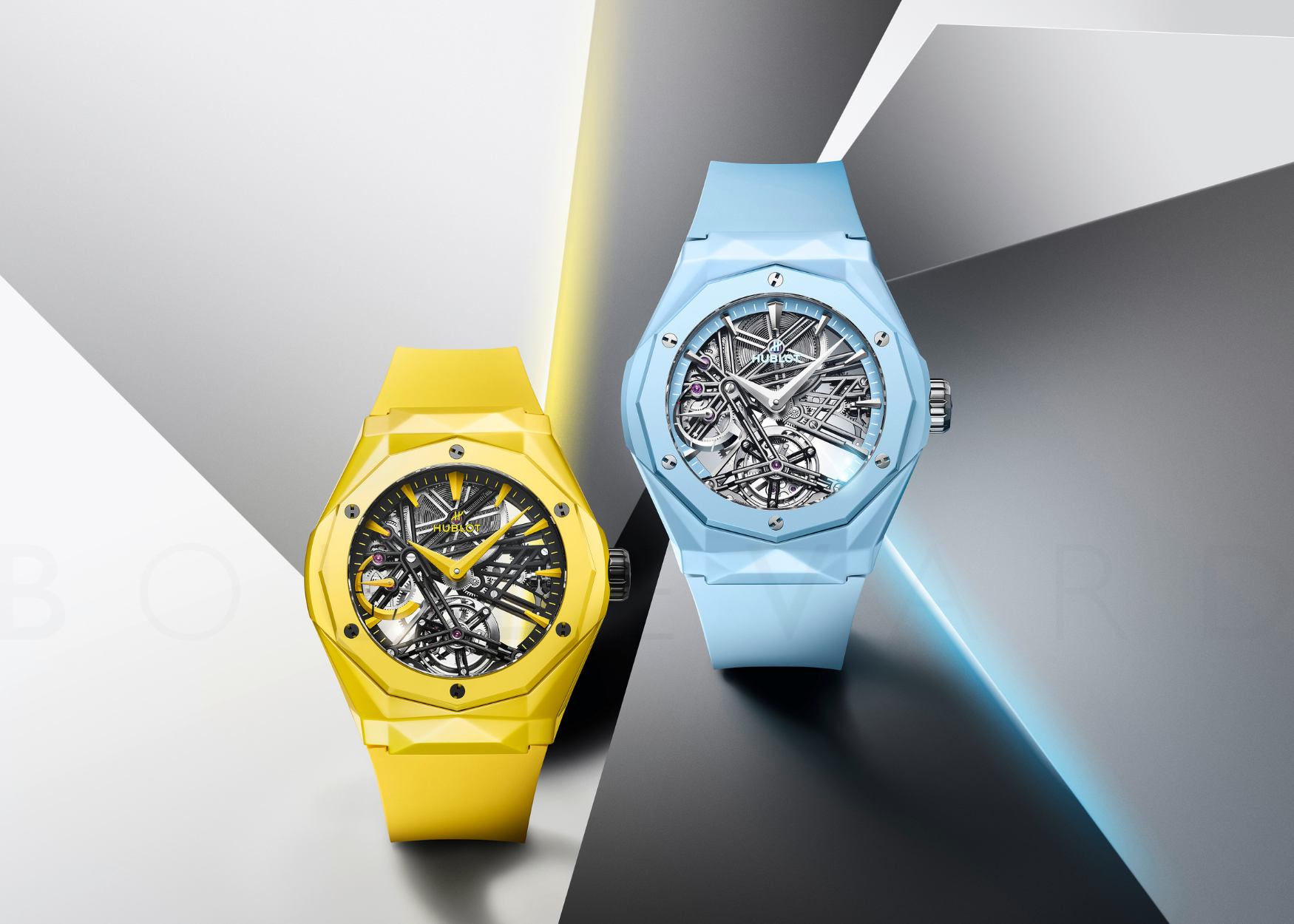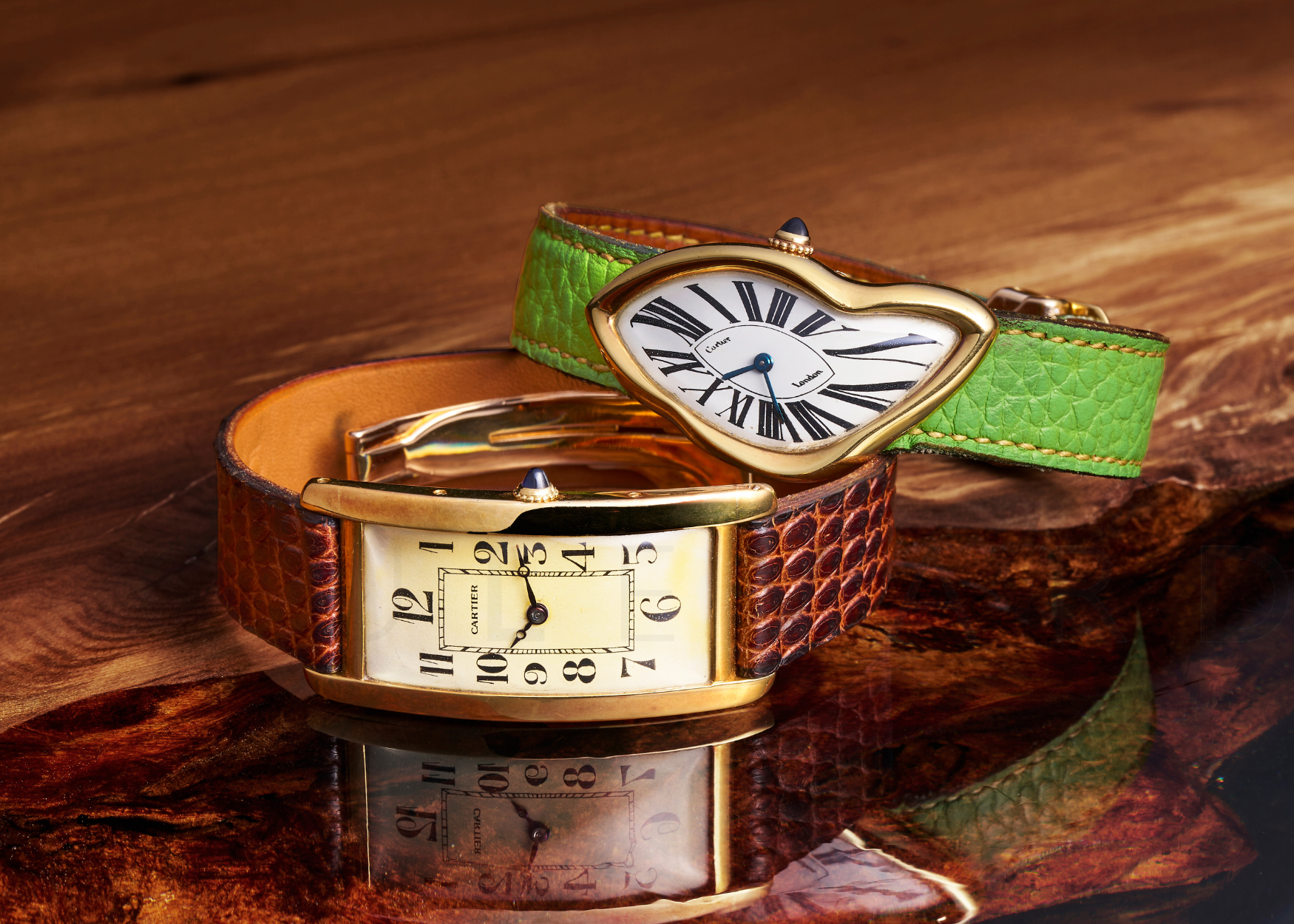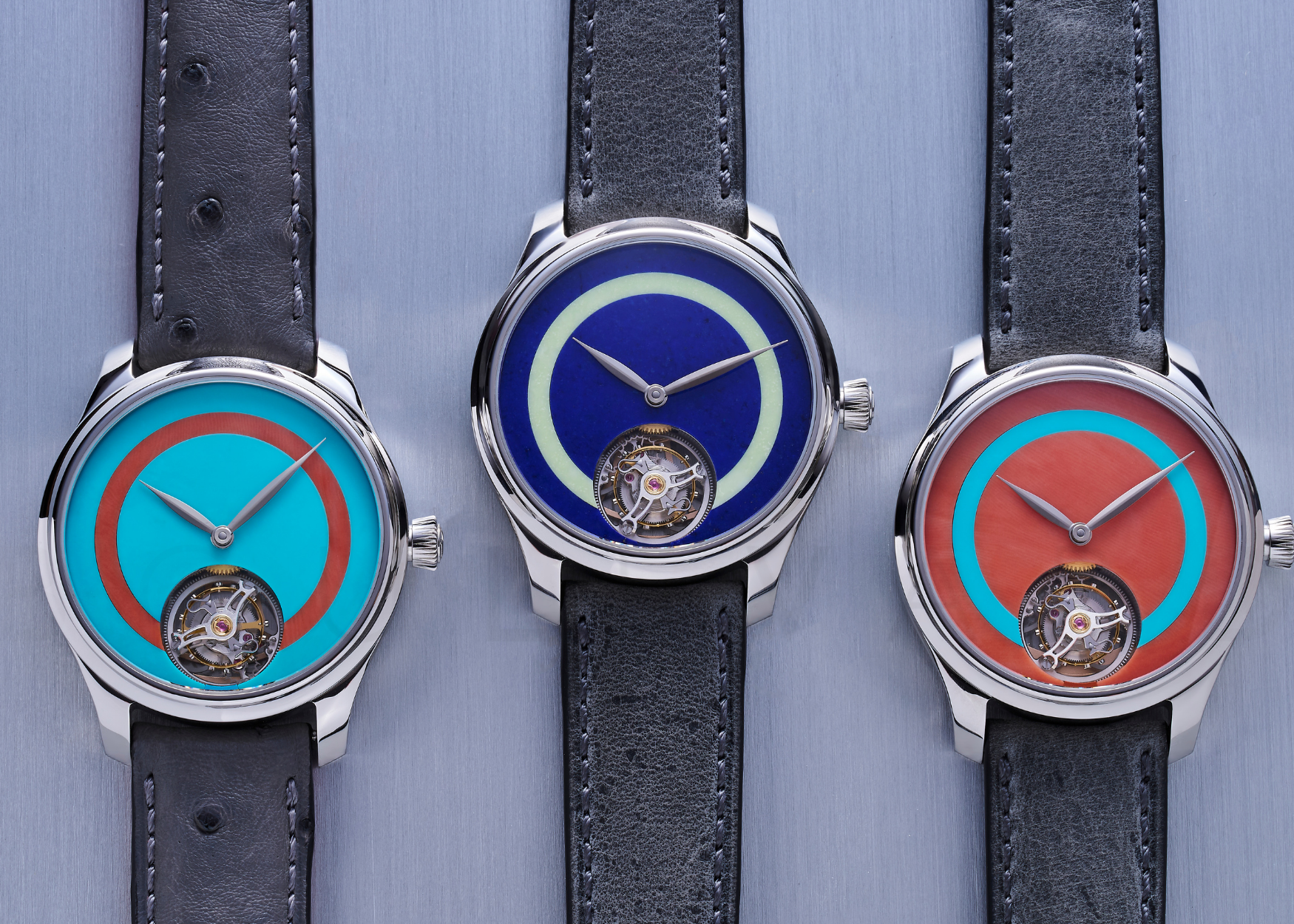

Luxury Watches
Boulevard presents world’s most extraordinary, and collectable, timepieces by Roger Dubuis, Audemars Piguet, Bovet, Breguet, Hublot, Jacob & Co, MB&F, Ulysse Nardin, Vacheron Constantin – and we’re just winding up…
— Featured in Boulevard Magazine —
The interview: Fabrizio Buonamassa Stigliani on Bulgari’s bold new novelties at Watches and Wonders 2025
At the 2025 edition of Watches and Wonders in Geneva, Italian watch maison Bulgari showcased its latest novelties that continue to push the boundaries in horology. Boulevard chats with Bulgari’s creative director for watches, Fabrizio Buonamassa Stigliani, who shared insights into the design and ideas behind these remarkable creations.
Interview
The interview: Franck Muller’s Nicholas Rudaz reveals the stories behind the brand’s bold new novelties and takes us inside Watchland
Founded in 1991, at a time when the Swiss watch industry was still finding its footing after the quartz crisis, Franck Muller burst onto the scene with a rebellious spirit and a flair for the unconventional. Co-founded by maverick watchmaker Franck Muller and diamond specialist Vartan Sirmakes, the maison quickly made a name for itself with its bold, baroque style—think colourful dials, flamboyant numerals, and signature tonneau-shaped cases that curved around the wrist. But beneath the theatrical aesthetic lay serious mechanical muscle, with complications like the whimsical Crazy Hours showcasing the brand’s knack for marrying technical mastery with playful irreverence.
Review
The review: How Breguet’s Type XX Chronographe redefines the tool watch
Gravitas. It's an underutilised descriptor. Yet here, armed with Breguet’s 18K Rose Gold Type XX Chronographe 2067, arguably one of the maison's finest releases in some time, other words feel inadequate.
Interview
The interview: Grand Seiko’s Akio Naito on the brand’s journey from functional mastery to emotional storytelling
Seiko Watch Corporation’s president Akio Naito talks us through Grand Seiko’s journey into the emotional heartland of high horology.
Showcase
Luxury watchmakers that redefined the times
It’s almost difficult to recall the state of horology only a few decades ago, when high watches were elegant, svelte, timeless. How things have changed. These are the brands that blazed the trail.
Review
Big, bold and beautiful outlandish watches
Big, bold and beautiful: These outsized and out-of-this-world timepieces boast astounding mechanics – and eye-popping aesthetics to match.
The art of the chronograph
Though ubiquitous, the chronograph demands exceptional skill to create. These watches showcase the pinnacle of horological achievement.
Jewellery, watch or work of art?
From ancient and intricate techniques to rare stones and breathtaking designs, jewellery watches are at an all-time high.Shot on location at Roche Bobois
— Latest Luxury Watches Features —
Interview
Ultra-thin watches that redefine horological ingenuity
For many watchmakers and collectors alike, the thinner a timepiece is, the better. That may be a matter of preference – or debate – but there’s no disputing the breathtaking, infinitesimal complexity of ultra-thin watches.
Captivating watch dials that marry art and horological ingenuity
Shot on location at Proof Living.
Showcase
The most complicated watches of recent times
Watch complications, though no longer strictly necessary, serve more than a utilitarian purpose. They embody ingenuity, an enduring respect for tradition, and a blend of smart mechanics and design finesse.
Review
Dissecting 2024’s most polarising watch launch
Undoubtedly one of the most hotly debated watch launches in recent times, the Patek Philippe Cubitus impresses IRL.
Watches for women that showcase technical and artistic virtuosity
Watchmakers are increasingly celebrating the multifaceted nature of women with timepieces that combine technical mastery and artistic flair—from diamond-studded creations to poetic complications. These designs honour heritage while pushing the boundaries of innovation.
Three highlights that make the AP House in Singapore worth visiting
Located within the historic Raffles Hotel’s Bar and Billiard Room, the recently opened AP House in Singapore immediately transports visitors into Swiss watchmaker Audemars Piguet’s world. It seamlessly blends the building’s preserved architecture with interiors inspired by the Swiss Maison’s home in Le Brassus and the surrounding lush nature.
Material World: Exquisite Timepieces & Divine Décor
Up until the 20th century, quality watches were primarily encased in silver or gold. Over the past 100 years, however, we have witnessed immense advances in the types of materials used to keep mechanical movements safe from the elements.
Partners in time: Maximilian Büsser on the collaborations behind MB&F’s legendary timepieces
'MB&F' stands for 'Maximilian Büsser and Friends'. Since its inception in 2005, from the moment the business name was registered, this watchmaker and purveyor of mechanical art objects has had collaboration at its core. Essentially, it’s a vehicle for founder Büsser to partner with individuals possessing specialised skills, in order to make innovative horological concepts and out-there inventions a reality.
Boulevard’s Fireside makes its debut in Australia in partnership with Chrome Temple
Boulevard's private event concept, ‘The Fireside’, debuted in Sydney with an evening hosted by LexPedersen, co-founder of supercar fund Chrome Temple.
New release
The Blancpain Fifty Fathoms Automatique returns in a sleek, new form
In June 2025, Swiss watch maison Blancpain globally launched five new iterations of its iconic diver's watch—the Fifty Fathoms Automatique Collection—a smaller, more compact format that stays true to its deep-sea roots.
New release
Bulgari celebrates light and colour in its purest form with the Polychroma collection
For Bulgari, colour has never been an afterthought—it has always been the foundation. From the rich blues of the Mediterranean skies to the deep reds and golds found in Roman architecture and mosaics, the maison has long drawn from its surroundings to create jewellery that speaks through contrast and intensity.
New release
The Ladybird by Blancpain receives a sophisticated purple update
In 1956, Blancpain made horological history with the launch of the Ladybird—the smallest round mechanical watch of its time. This pioneering creation marked a significant moment in watchmaking, offering a refined alternative to the larger movements that featured in women’s timepieces. Its appeal extended beyond size, often distinguished by luxurious touches such as a mother-of-pearl dial, a finely crafted gold case and adorned with diamonds and other precious gemstones.
Event
The timepieces from Watches and Wonders Geneva 2025 push the boundaries with bold, vibrant designs and cutting-edge technology
The 2025 edition of Watches and Wonders in Geneva unfolded with exciting new novelties from the most renowned maisons in horology. From colourful watches and dazzling timepieces adorned with precious gemstones, to ultra-thin movements and innovative complications, each piece embodies the fair’s long-standing reputation for precision, artistry, and unmatched craftsmanship.
New release
20 years on, the divisive Hublot Big Bang collection is stronger than ever
To say that the launch of Hublot's Big Bang collection was a seminal moment in watchmaking would not be an exaggeration. Launched in 2005, it marked the revival of Hublot, the brand founded in 1980 by Italian entrepreneur Carlo Croco. The Big Bang made quite the bang—pun intended—as it marked a shift in horological design language. A luxury timepiece, with exposed screws, a chunky case and a rubber strap? At that time, it was unthinkable.
New release
Franck Muller Silhouette CX Snake: A limited-edition masterpiece with emerald detailing
Franck Muller is known for its signature Curvex CX cases that house not only the most complicated technologies but are also crafted with exceptional design. The Silhouette CX Snake is an extraordinary timepiece that represents the next evolution of the iconic watch case, crafted by renowned master casemaker Vartan Sirmakes.
New release
Breguet’s Reine de Naples 9915 Valentine’s Day Edition embodies passion and refinement
In 1810, when Napoleon Bonaparte’s younger sister envisioned Breguet’s first wristwatch, she commissioned Abraham-Louis Breguet to create a timepiece befitting her status. This marked the beginning of the world-famous Reine de Naples line. In 2025, the Maison adds another exclusive masterpiece to this iconic collection in celebration of Valentine’s Day.
New release
Richard Millle partners with Ferrari to create the ultimate split-second tourbillon, the RM 43-01
Swiss luxury watchmaker Richard Mille first collaborated with renowned Italian marque Ferrari in 2021, unveiling the RM UP-01 Ultraflat Ferrari—a timepiece that, at just 1.75mm thick, stunned the watch world with its razor-thin profile. When it was officially launched in 2022, the watch sparked controversy over its unconventional design, yet it nonetheless demonstrated Richard Mille’s horological prowess. It also edged out Bulgari’s Octo Finissimo Ultra, which debuted the same year, to claim the title of the world’s thinnest mechanical watch.
Jacob & Co’s latest edition of The World Is Yours timepiece: Inspired by the watch that sparked a legacy
Jacob & Co unveils the latest edition of The World Is Yours Dual Time Zone Tourbillon, featuring a stunning world map dial and welcoming a tourbillon at its heart.
Five exclusive, serpent-inspired timepieces for this Lunar New Year
The significance of the snake is deeply rooted in rich symbolism, drawing from ancient Chinese myth, where the creature is seen as a symbol of wisdom and transformation. It is also renowned for its mystique, strength and ability to shed its skin, embodying renewal and resilience. These powerful traits have inspired some of the world’s leading watchmakers to embrace the Wood Snake tradition.
New release
Franck Muller Round Skeleton Baguette 31 is a marriage between fine jewellery and haute horology
Franck Muller continues its quest in crafting timeless creations by marrying together the beauty of high jewellery and the complexity of haute horology in the new Round Skeleton Baguette 31. This iconic piece is part of the Maison's Asia Pacific Exclusive collection. It is also the latest addition to the Round Skeleton lineup but made more unique, thanks to the baguette-cut diamonds and coloured gemstones that adorn the bezel and case.
New release
The Hublot Spirit of Big Bang Sang Bleu All Black Pavé is a bold, geometric masterpiece
In 2016, Swiss watchmaker Hublot partnered with Maxime Plescia-Buchi, founder of Sang Bleu, to bring tattoo artistry into the world of haute horology. Together, they transformed intricate geometric tattoo art into wearable timepieces and released over a dozen designs, including the Big Bang Sang Bleu.
The Albatross: A look at MB&F and L’Epée 1839’s airship-like marvel
MB&F's fruitful decade-long partnership with L’Epée 1839 has produced some memorable machines and mechanisms, 15 of them to be exact. The StarfleetMachine, for instance, wowed audiences as an intergalactic spaceship-cum-table clock with double retrograde seconds. Grant, on the other hand, was a combination of what seemed to be a reconfigured futuristic tank, having a clock as a shield on its back.
New release
Jacob & Co unveils exclusive timepieces in collaboration with Manchester City
Jacob & Co is one of the most recognized luxury watchmakers for its horological expertise, as well as its use of high-end materials in crafting great complications. Each masterpiece has made its benchmark around the world and became a true collector's item, just like the Billionaire Timeless Treasure watch which fused high jewellery and horology together and was only available in a limited release of 21 pieces.
New release
Grand Seiko unveils a daybreak version of the Kodo Constant-force Tourbillon
In 2022, Grand Seiko released the first Kodo Constant-force Tourbillon, a complication that houses a tourbillon and a constant-force mechanism as one unit on a single axis. It was the first time in horological history that one timepiece holds both complex mechanisms, which is the reason why it garnered the Chronometry Prize at that year’s Grand Prix d’Horlogerie de Genève. This year, Grand Seiko unveils its daybreak counterpart to complete the portrayal of light and dark in its Kodo collection.
New release
Blancpain Ocean Commitment: A timepiece dedicated for ocean preservation
The Blancpain Fifty Fathoms traces its origins to the navy, like many iconic dive watches of its era. In the early 1950s, the French Navy challenged watchmakers to create a timepiece that could withstand underwater operations. At the helm of Blancpain was CEO Jean-Jacques Fiechter, an avid diver whose passion shaped the watch’s design. His hands-on approach led to a timepiece prized by militaries worldwide, including those of Pakistan, Germany, and the United States.
New release
Hublot’s new collaboration with Takashi Murakami reveals a colourful expression of art and time
Hublot first began its partnership with renowned Japanese contemporary artist Takashi Murakami in 2021, united by a shared vision of creating timepieces that are exceptional, as they are functional. These include the Classic Fusion models and a series of NFT artworks that are paired with unique pieces.
New release
Wolf celebrates its 190th year anniversary with new limited-edition collections
Wolf is a renowned British-based luxury brand that curates the most exceptional watch winders and jewellery boxes. It has gone through five generations of the Wolf family line and has continuously operated since its inception in 1834. This year, Wolf celebrates its 190th anniversary by releasing five limited-edition collections, each inspired by its five generations.
New release
The Bulgari x MB&F Serpenti brings the snake motif to life
After their vibrant 2021 collaboration with the LM FlyingT Allegra, high jewellery Maison Bulgari and Swiss watchmaker MB&F partner once more to reimagine the iconic Bulgari Serpenti – blending heritage with bold innovation.
New release
Breguet Marine Tourbillon Equation Marchante: A grand complication in platinum armour
The Marine Equation Marchante 5887 is arguably one of Breguet's highly technical timepiece, featuring a 43.9-mm diameter case and an ultramarine face that first came out in 2017. Three years later, the tourbillon collection was reimagined in warm reflections of pink gold, complemented with a beautiful chocolate-coloured dial.
Review
Glashütte’s PanoLunarInverse captures the moon’s captivating aura
Moonphase complications are among the oldest and most intricate movements in horology, requiring exceptional precision. They not only enhance the aesthetic appeal of a watch but also showcase the complexity and attention to detail involved in its creation. In its latest masterpiece, Glashütte Original reinterprets the moon, offering a glimpse of its captivating aura within the PanoLunarInverse.
New release
IWC Schaffhausen unveils the Ingenieur Automatic 40 with a striking blue dial
IWC Schaffhausen first introduced the Ingenieur in 1955 as an antimagnetic wristwatch designed for civilian use, marking a significant milestone for the Maison. The timepiece gained even greater prominence in the 1970s when renowned Geneva watch designer Gérald Genta reimagined and transformed it into a stainless-steel luxury sports watch.
New release
IWC Schaffhausen unveils a new timepiece fuelled by its longstanding Formula One partnership
Since 2013, IWC Schaffhausen has forged a profound partnership with the Mercedes-AMG Petronas Formula One Team, becoming its ’Official Engineering Partner’. The Maison crafted the first official team watch in 2022 with the Pilot’s Watch Chronograph 41 Edition, followed by the Pilot’s Watch Performance Chronograph 41 in 2024.
New release
MB&F Legacy Machine Split Escapement ‘Eddy Jaquet’ series: Capturing the great classics of youth literature
When MB&F first introduced the limited-edition series of its Legacy Machine (LM) Split Escapement in 2021, it brought the novels of French author Jules Verne to life through an intricately hand-engraved dial crafted by Eddy Jaquet.
Showcase
Cartier’s latest skeleton masterpiece created for the highest flyers
Skeleton timepieces represent a statement of engineering excellence for the world’s finest luxury watchmakers. For the house of Cartier, watchmaking often incorporates rich elements of art and breathtaking jewellery design.
Showcase
Jacob & Co’s Opera Godfather Musical Watch is the pinnacle of high watchmaking
Most have come to associate Jacob & Co with lavishly radical watchmaking. Each piece is an exercise in bold complications using traditional methods. Its Opera Godfather Musical Watch is no different. This limited-edition release, with its mechanical musical box and triple-axis gravitational tourbillon, enjoys the quintessential features of a definitive Jacob & Co classic.
Event
Adrenaline and Swiss artisanship: The genius of Rebellion’s timepieces
Only a handful of watchmakers focus on the thrills of mechanical depth like Rebellion. Its translucent skeletonised cases and elegantly sportier character are indicative of a passion for motorsport. The spirit of the brand's timepieces is synonymous with that of a sportscar: light, stylishly bold, high octane and visually stunning.
Interview
The art of time: Bovet 1822 owner Pascal Raffy talks us through the brand’s hand-painted dials
When you've mastered the full suite of mechanical complications – including an extraordinary phases of the moon dial complete with orbiting satellite – where to next? For Bovet 1822, it was a step back from engineering, and into art.
Interview
De Bethune CEO Pierre Jacques talks about master watchmaker Denis Flageollet
De Bethune is among the most innovative watchmakers in operation today. So it seems apt to ask the company’s CEO, Pierre Jacques, how he drives his team to remain inventive and inspired. Jacques deflects all praise in this regard to his partner in the business, De Bethune cofounder and master watchmaker, Denis Flageollet.
Piaget Reappraised: Interview with new image director Fatemeh Laleh
The luxury watchmaker and jeweller’s new image director Fatemeh Laleh is bringing the brand back into the limelight.
Blancpain goes full gold with its two latest additions to the famed Bathyscape series
Back in June, Blancpain celebrated its Bathyscape collection with a contemporary ceramic reinterpretation. The Bathyscaphe Quantième Complet Phases de Lune incorporated the Maison's innovative calendar DNA with the Bathyscape's signature diver aesthetics and functionality, adding another layer to the series' proud history.
Hublot Xplorations sets its sights on unraveling the history of the Antikythera shipwreck
If there's one thing Hublot has always understood, it's the beauty that lies in heritage. Since the Maison's launch in 1980, it has continued to push the boundaries of Swiss watchmaking and what a modern timepiece could be. This, of course, started off with the introduction of polished and brushed gold and rubber into haute horology, presenting new ways of defining style and adaptability.
Emera’s Cyborg Exoskeleton Tourbillon Super Structurae is a stunning portrait of futuristic watch design
As a younger player in the prodigious world of Swiss watchmaking, Emera prides itself in its sense of creativity and horological ingenuity. The Maison's collections are exercises in new aesthetic frontiers, opting for more futuristic styling laced with centuries-old mechanical practices. This is especially evident in one of its flagship pieces, the Cyborg Exoskeleton Tourbillon Super Structurae.
Inside IWC Schaffhausen’s record-breaking Portugieser Eternal Calendar
In the realm of luxury aviation watches, IWC Schaffhausen has earned itself quite the reputation, thanks to its use of ceramic and titanium, functional calendar complications and the iconic moon phase calendar.
Franck Muller x Ryoko Kaneta: Crafting a whimsical Cintrée Curvex reinterpretation of the dragon
Franck Muller's spirit of collaboration is most evident in its work with contemporary art world. The Maison has worked with the likes of Loes van Delft, Hom Nguyen and Daniel Arsham, among others, to create some of its most fascinating modern timepieces. And its latest Cintrée Curvex piece with Japanese artist Ryoko Kaneta is no different.
Breguet’s new Classique Double Tourbillon ‘Quai de l’Horloge’ is a collector’s dream
The famed Classique Double Tourbillon 'Quai de l’Horloge' is arguably the ultimate homage to the richness of Breguet's history. It was with the piece that the Maison would introduce the world to the idea of the tourbillon, which would eventually be patented by Abraham Louis-Breguet himself. All these years later, its latest reiteration, the 5345 in rose gold, still references the same styling cues, as well as Breguet's legendary birthplace in Paris.
The interview: Nicholas Rudaz, CEO of Franck Muller, on the making of New Novelties 2024
Thinking about the Aeternitas Mega, one can't help but appreciate this masterclass in Franck Muller's technical prowess. It's only fitting that the most complicated watch in the world (built with a whopping 36 complications and 1,483 components) is made by the master of complications themselves. This piece encapsulates the brand's commitment to horological innovation. It's a philosophy that has defined its iconic collections since the introduction of the Cintrée Curve in 1987.
Roger Dubuis Orbis in Machina Central Monotourbillon: Haute horology in constant motion
The first thing that comes to mind with Roger Dubuis is its distinctive architectural designs and sharp aesthetic quality. In particular, its skeletonised dials allow the wearer an intimate look with the intricacies of the mechanical movements. Each timepiece boasts a unique expression that is sure to impress even the most savvy collector
Blancpain’s Bathyscaphe Quantième Complet Phases de Lune is a reinterpretation of a beloved classic
Nearly 70 years later, Blancpain's Bathyscape collection still enjoys quite the notoriety among watch collectors. The daily-use version of the iconic Fifty Fathoms collection, and its decreased diameter, made it one of the most celebrated diver's watches ever. Recently, the Maison introduced a contemporary reinterpretation of such with the Bathyscaphe Quantième Complet Phases de Lune.
Grand Seiko SBGD213 in blue sapphires is a fitting tribute to the white lion
It was only in 2020 that Grand Seiko introduced a jewellery watch into its Masterpiece Collection. The iconic Lion would be replaced by the regal white lion, and soon enough, Spring Drive jewelry timepieces would set a new standard for the Maison. At Watches and Wonders Geneva, the latest Spring Drive 8-day jewellery would be met with a glorious reception, leading to some of the most sought-after divers in the world.
Three timepieces that reshaped modern femininity
In the world of haute horology, these watches stood out as symbols of refinement, horological ingenuity and enduring style. These rare timepieces exuded a particular feminine grace, a kind of unique charm that captivated its fellow Maisons. From sleek minimalist designs to intricate complications and timeless accents, these revered expressions paid homage to women's place in the watchmaking industry.
Interview
The interview: Sadry Keiser, CMO of Roger Dubuis, looks back on five generations of chronographs
"The chronograph complication holds a dear place in our Maison," Roger Dubuis Chief Marketing Officer (CMO) Sadry Keiser says. "Mr. Roger Dubuis was passionate about traditional horological complications, so when he launched his company in 1995, he included a chronograph calibre in the very first watches he created."
When haute horology meets fine art: Frieze Art Fair shines the spotlight on Breguet
At this year's Frieze Art Fair in New York, independent curator and Apsara Studio founder Jenn Ellis would unveil the product of an artistic collaboration brokered by Breguet and Frieze a year ago.
Glashütte’s PanoMaticInverse captures the essence of Dresden
Known as the 'Florence on the Elbe', the city of Dresden is often associated with romantic landmarks. Whether it's the Frauenkirche, the Academy of Fine Arts or the Baroque Zwinger Palace, the city's most important icons were made to stand the test of time. Right in the middle of this is where Glashütte Original established its operations, taking mostly from styling cues prevalent in the 19th century.
IWC unveils four new additions to its revered Portugieser Perpetual Calendar range
If there's one feature that distinguishes IWC Schaffhausen from the rest, it's the revered perpetual calendar. The horological calendar mechanism, first devised by none other than Kurt Klause in the '80s, signaled a turning point. Manual synchronisation was introduced and it became a pillar for haute horlogerie complications from then on.
Blancpain’s latest Villeret Quantième Perpétuel expression takes cues from the Le Brassus forest
Few names come close to the horological ingenuity of Blancpain. The brand is commonly associated with watchmaking innovation and craftsmanship. And the Villeret Quantième Perpétuel offers its own unique expression, featuring the complex perpetual calendar, as well as the under-lug correctors.
Piaget celebrates 150 years’ worth of watchmaking landmarks
Since its inception, Piaget's savoir-faire is often defined by their daring creativity. In the late '50s, it announced its reintroduction to the world in the form of the first ultra-thin clockwork: the Altiplano collection. The Maison's groundbreaking new movement remains one of the most historically significant innovations in the 20th century, blurring the distinction between art and timepiece.
Ulysse Nardin unveils a sandstorm: The Freak S Nomad debuts in a limited-edition sand-coloured expression
It was only two decades ago when Ulysse Nardin introduced an unorthodox timepiece in the face of 'Freak.' At the time, it was heralded for breaking the rules of traditional watchmaking: no dial, no hands and no crown. It was a risk when it was released but has since proven to be a groundbreaking timepiece with a deconstruction concept ahead of its time.
Breguet’s Reine de Naples 8918 is a grand ode to femininity
When Caroline Murat, Napoleon Bonaparte's younger sister, imagined Breguet's first wristwatch in 1810, she had Abraham-Louis Breguet create a timepiece worthy of her pedigree. Thus, the introduction of a series that would culminate in the world-famous Reine de Naples line. In honor of Women's Month, Breguet debuts a fresh new silhouette in the 8918.
Franck Muller Long Island Evolution: Revamped expressions for the modern age
When Franck Muller's Long Island watch first hit the market in 2000, it was revered for being a true homage to the Art Deco movement, with its curved rectangular case and rectilinear, arched numerals. It was a tasteful, innovative rendition of the Novecento style. More than two decades later, the renowned series gets reconfigured and revitalised with the Franck Muller Long Island Evolution.
The spirit of the Hublot Big Bang endures in the Maison’s latest timepieces
It's easy to forget how transformative the first release of the Hublot Big Bang was in 2005. It was a timepiece that paved the way for steel, ceramic and rubber to be seen as opulence redefined. From the 'sandwich' construction and 44-mm case to the large pushers and skeleton dial and strap, it has since become one of the most recognisable watches in the world.
Audemars Piguet’s new Royal Oak Concept Flying Tourbillon is a Tamara Ralph classic
It wasn't so long ago that Audemars Piguet’s first Royal Oak concept for women made quite a splash. Launched in 2018, the 18-carat white-gold timepiece featured a flying tourbillon and an array of brilliant or baguette-cut diamonds. At the time, it completely disrupted ideas of what a women’s wristwatch should be
Hublot’s Classic Fusion Tourbillon Orlinski weaves together art and high watchmaking
When Hublot first came to Richard Orlinski, the Swiss luxury watchmaker wanted a watch that had the makings of a contemporary piece of art. The collaboration ended up producing the coveted Classic Fusion Aerofusion Chronograph Orlinsk, mirroring the celebrated artist's stylised geometric subjects. Now, they've linked up again to create another stunning timepiece in the Classic Fusion Tourbillon Orlinski.
The Girard-Perregaux Neo Constant Escapement is a chronometric revelation
Girard-Perregaux gained the reputation of being an iconoclast in watchmaking with the introduction of the Constant Escapement in 2013. A winner of the Aiguille D'Or at the Grand Prix d'Horlogerie de Genève, the timepiece was a masterclass in chronometry and mechanical depth. It was a holographic revelation in many ways, addressing the fundamental concern of amplitude drops in watches.
What happens when a world-renowned camera maker creates a watch
Leica is a name forged in the history books of photography – with a reputation for precision imaging tools dating back to its foundation as Ernst Leitz Optische Werke in 1869. So what happens when a legendary German camera maker applies its philosophy of fine engineering to an entirely new discipline?
Showcase
Shaping time: Vintage Cartier watches from 1926 and 1987 are open to expressions of interest
Truth rarely gets in the way of modern folklore. The story of the Cartier Crash is one of those legends that has no close bearing to actual history. It was believed that the owner of a Cartier Baignoire Allongée warped his watch in a car crash, which ended up inspiring the shape of this collection. The truth, unfortunately, is a little less dramatic, but no less interesting. According to Francesca Cartier Brickell’s account of her family’s history in Cartiers: The Untold Story, it was influenced by the spirit of the Swinging Sixties.
Watches and Wonders 2025: The defining watch trends of the year
The 2025 edition of Watches and Wonders in Geneva brought together some of the most renowned watchmakers for a week of craftsmanship, creativity and technical achievement. Held at the Palexpo convention centre, the fair welcomed over 60 prestigious maisons, from heritage names to contemporary innovators—all unveiling their latest collections to an international audience.


